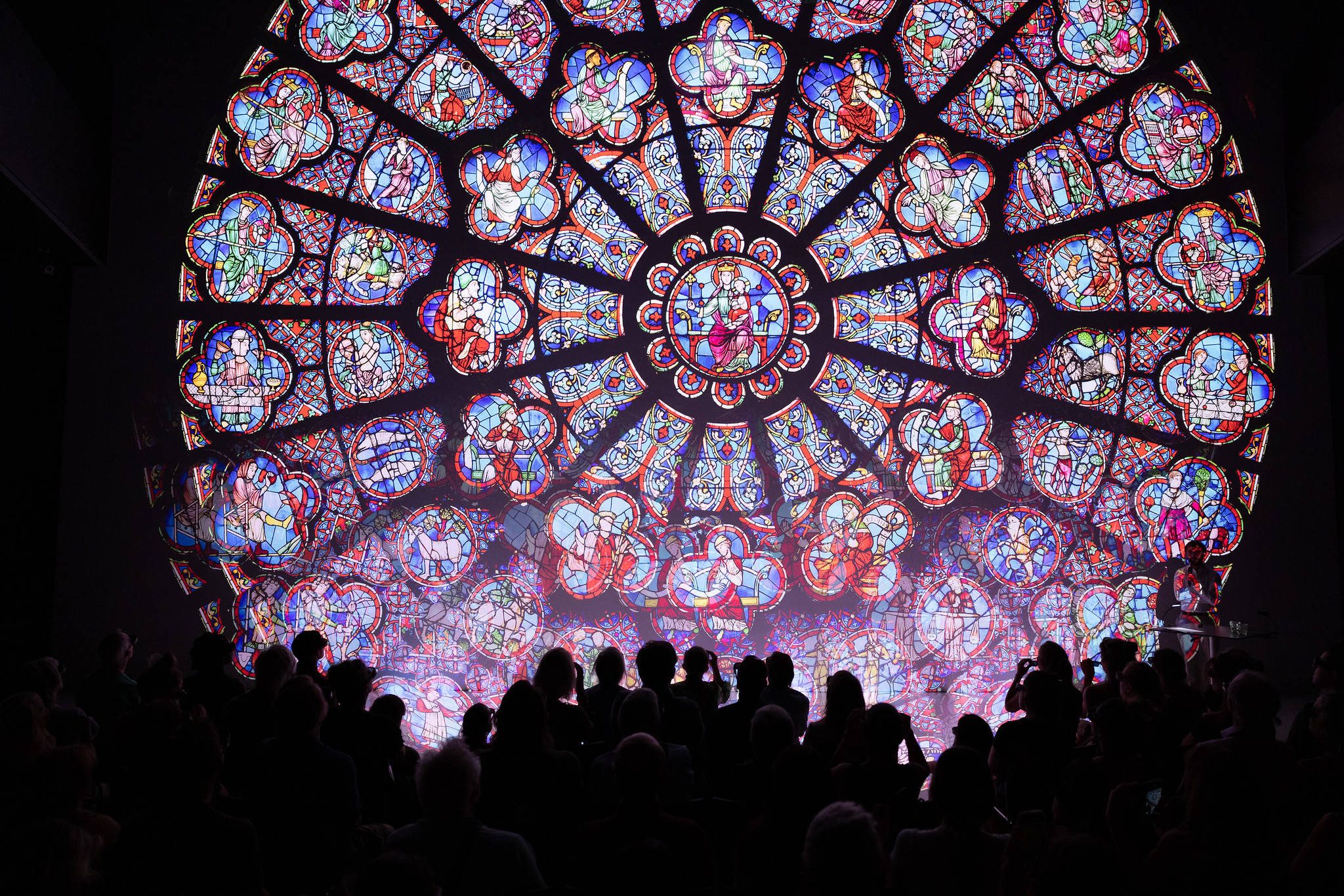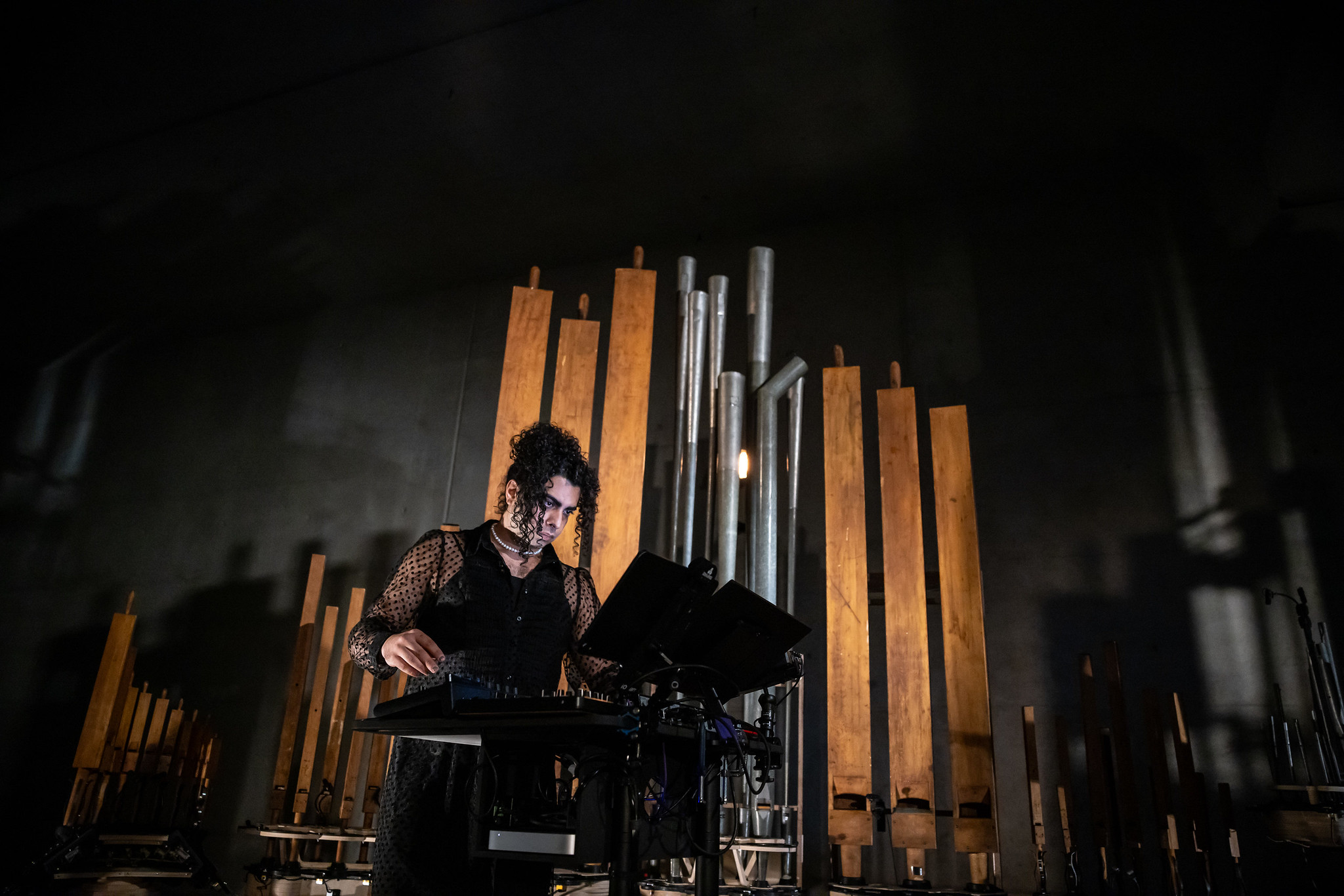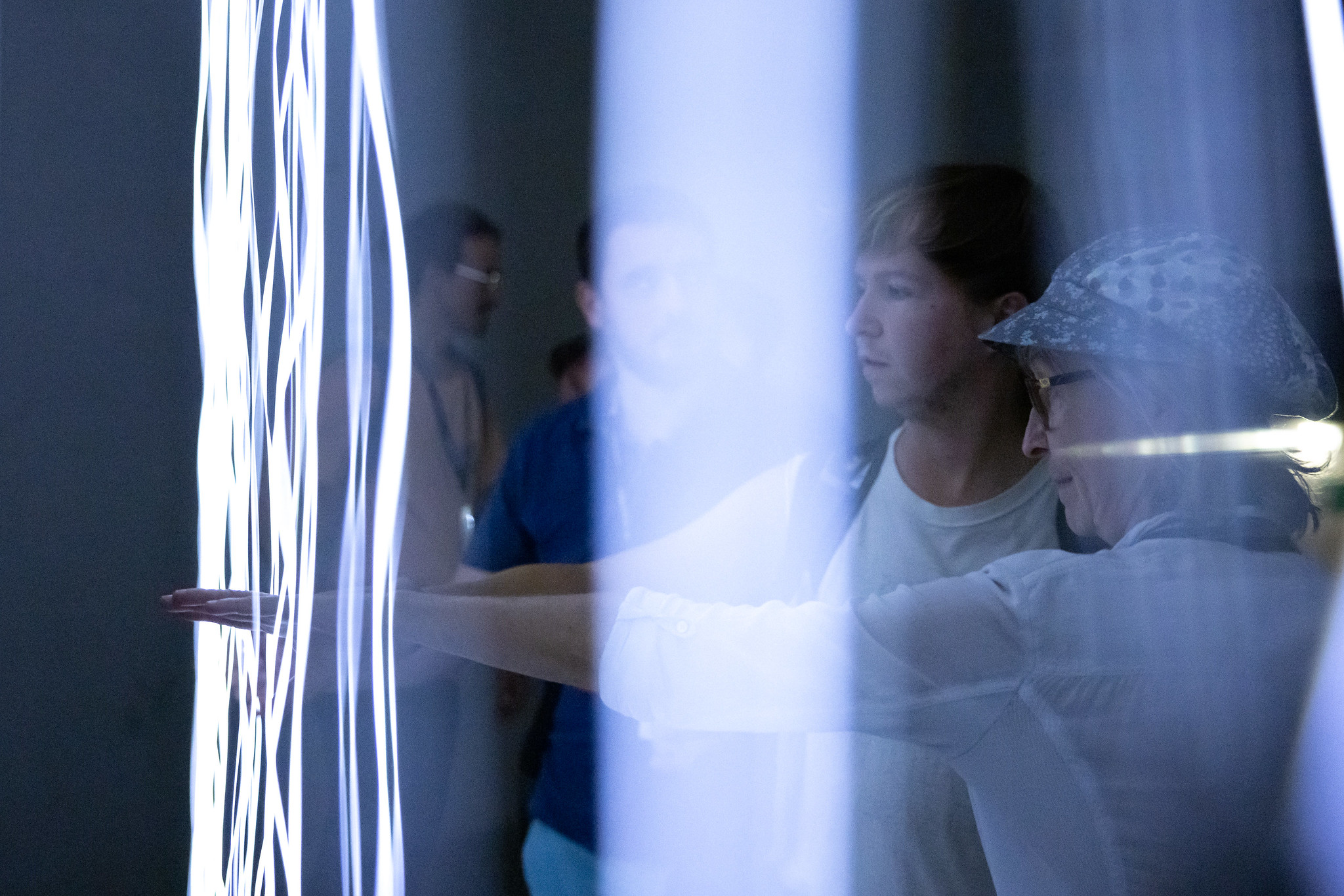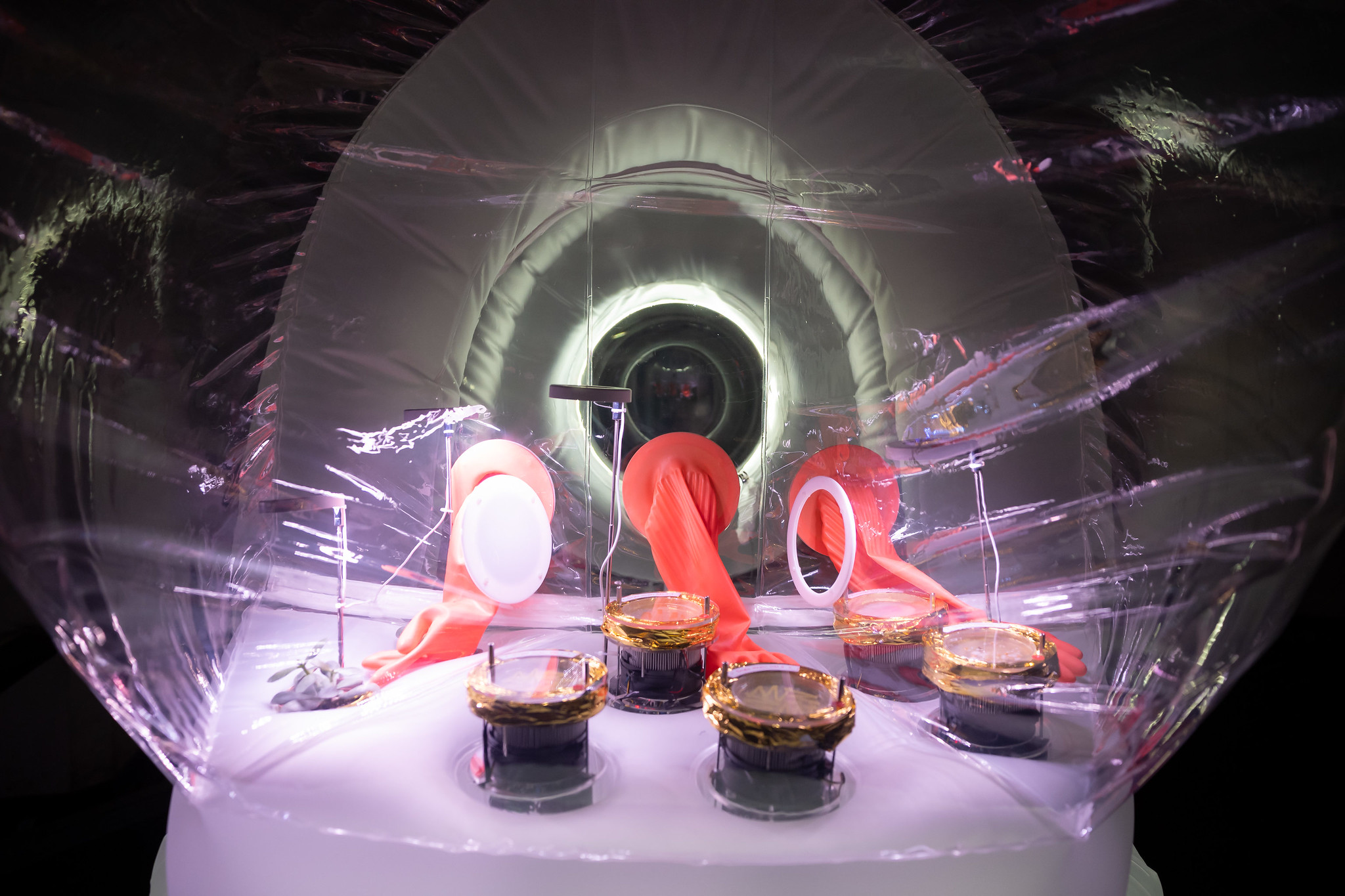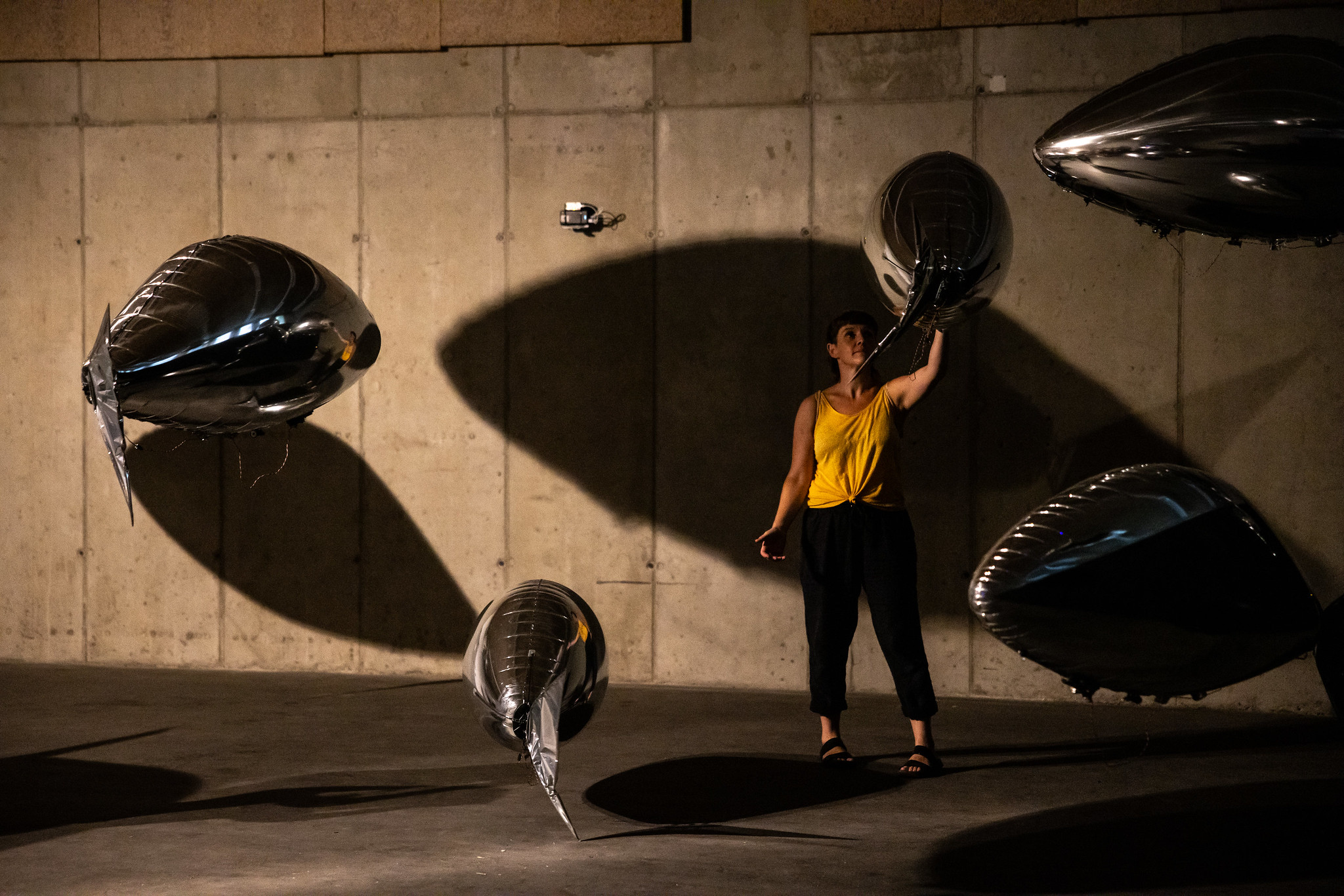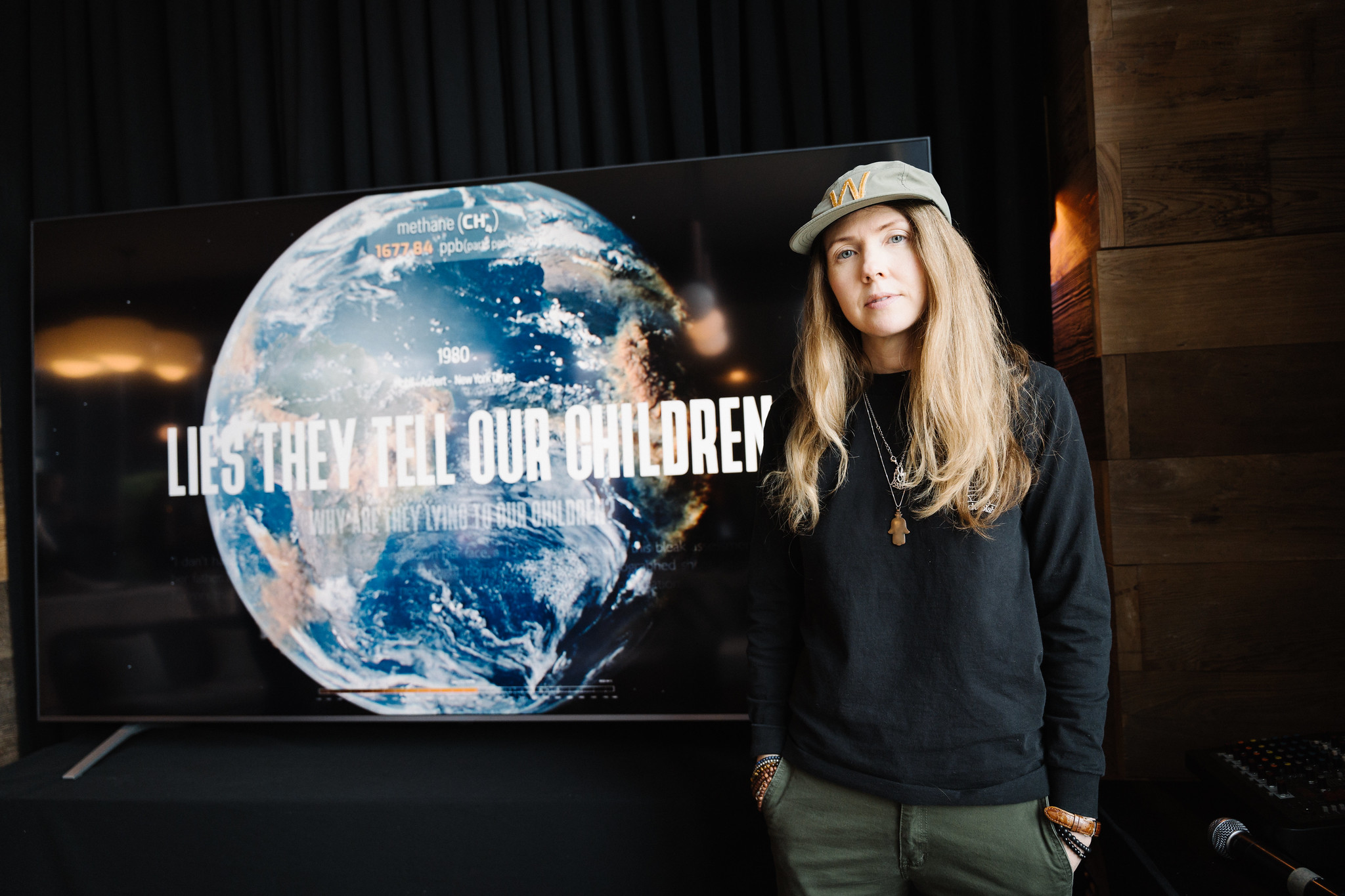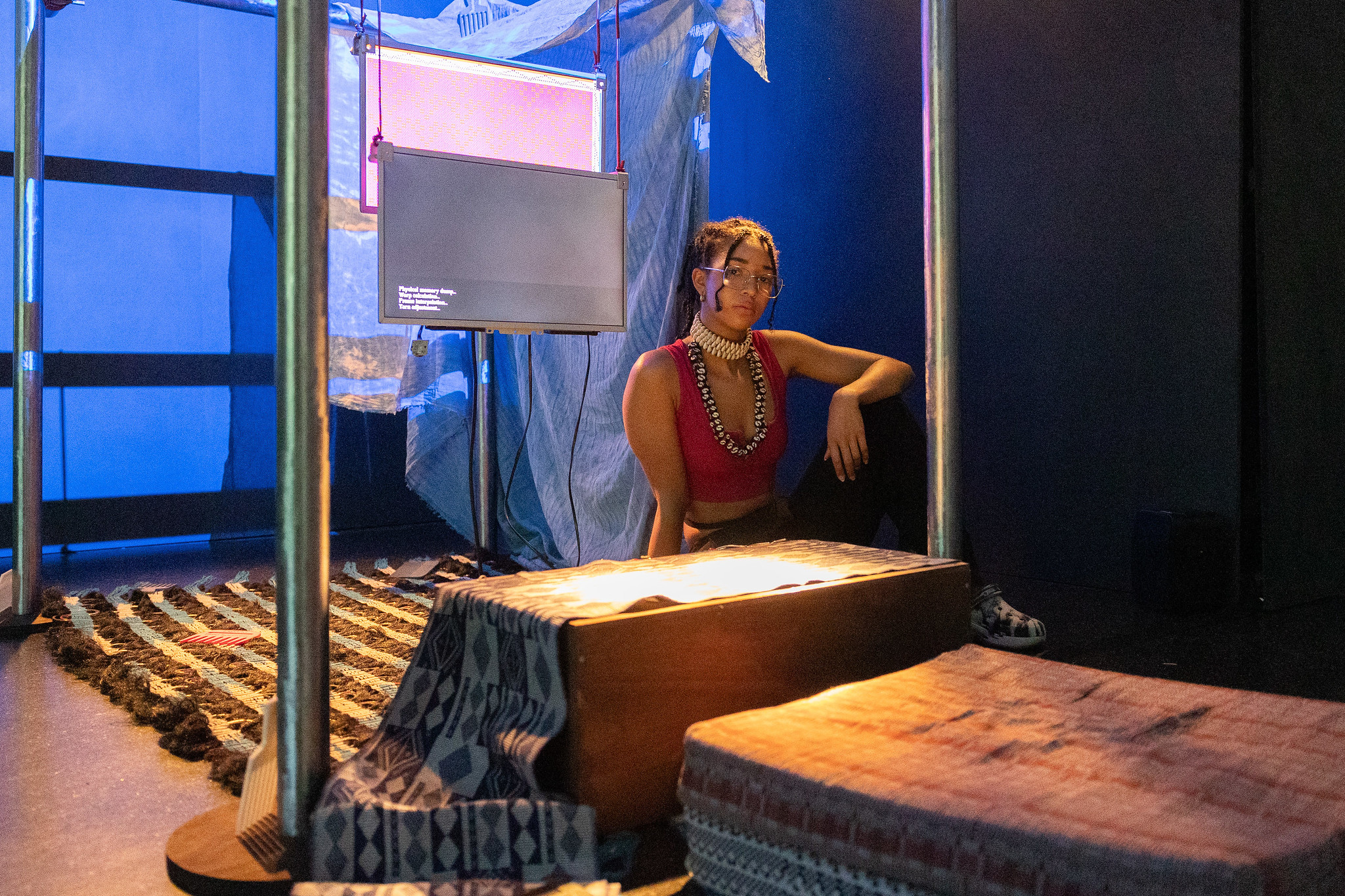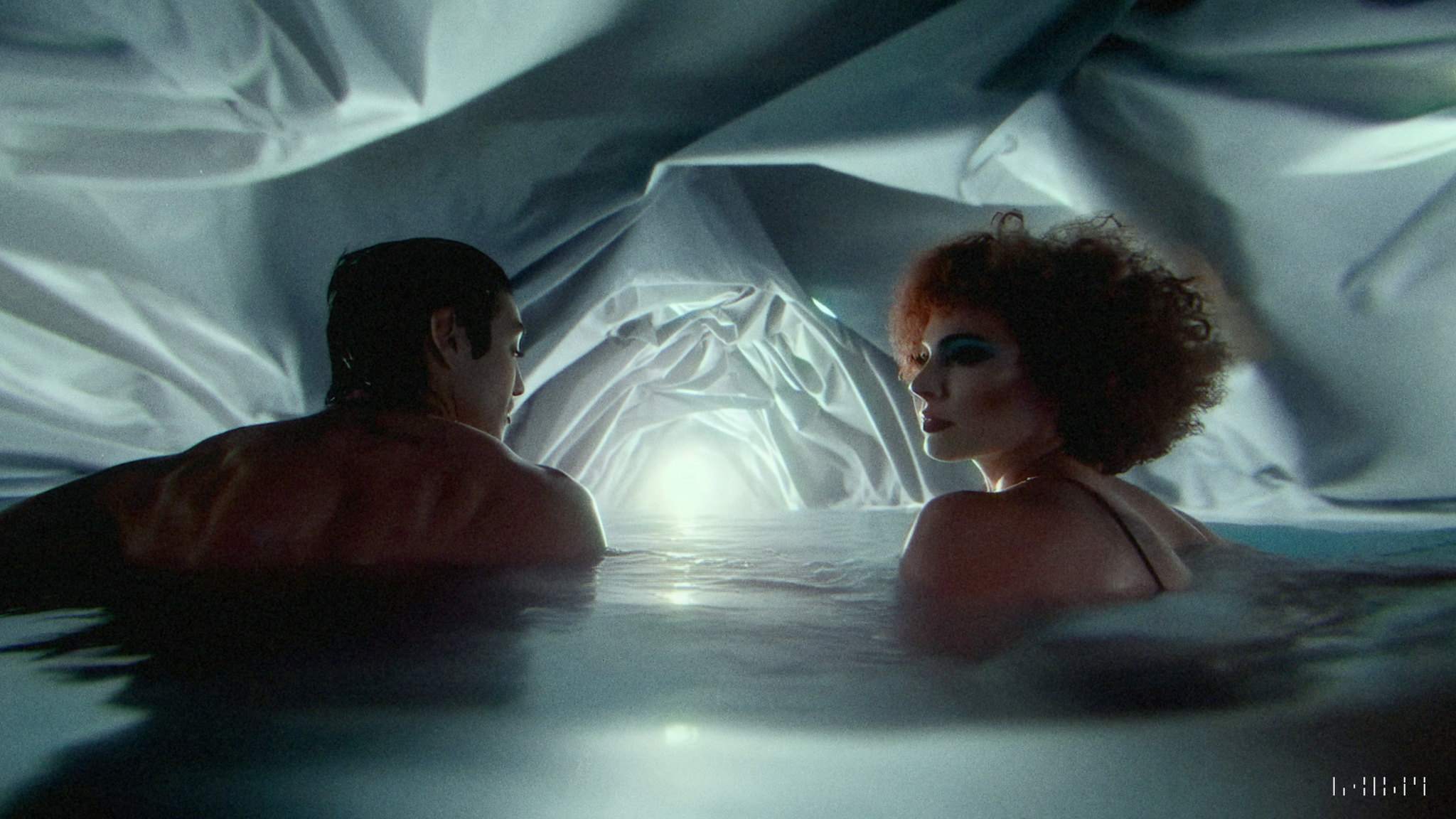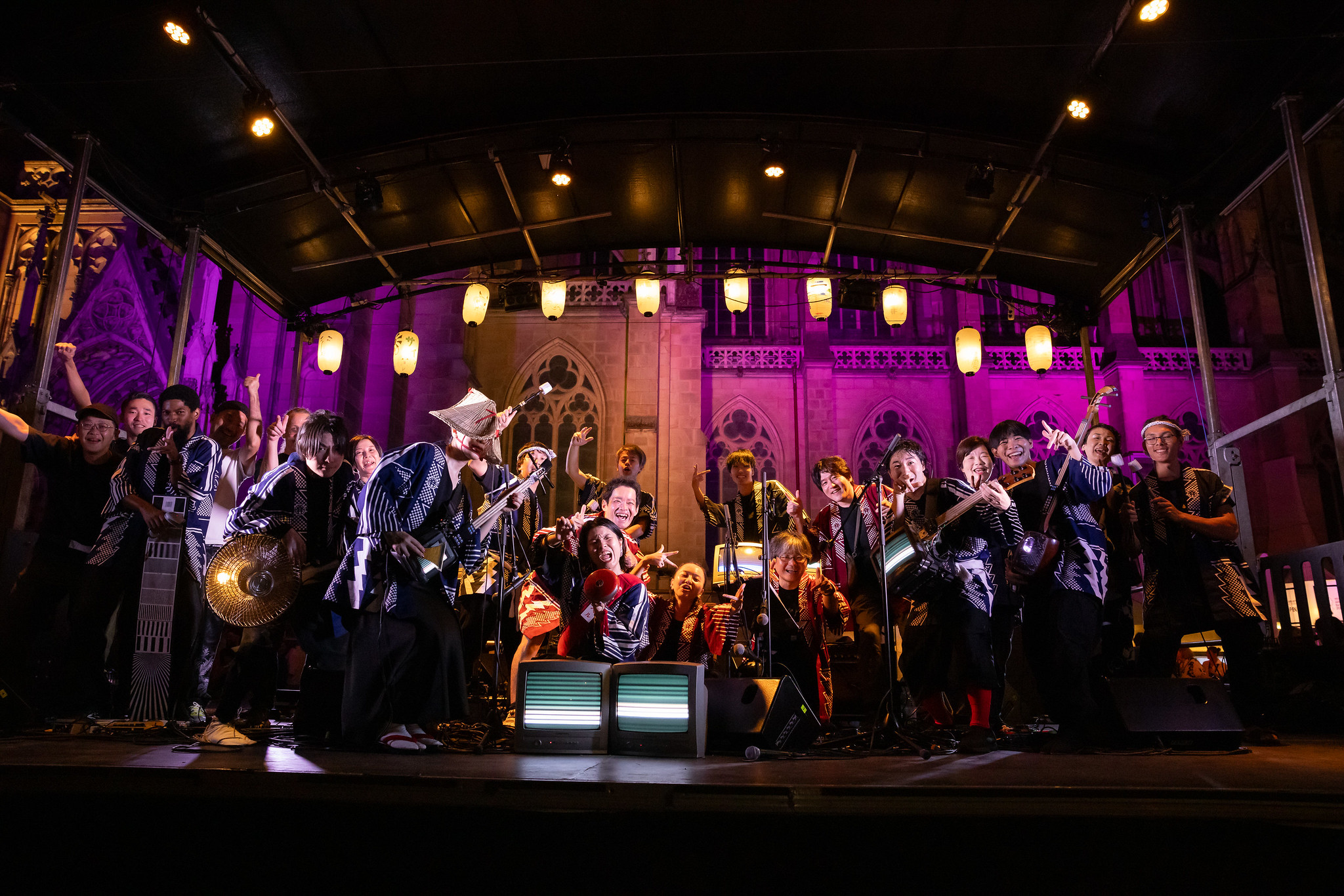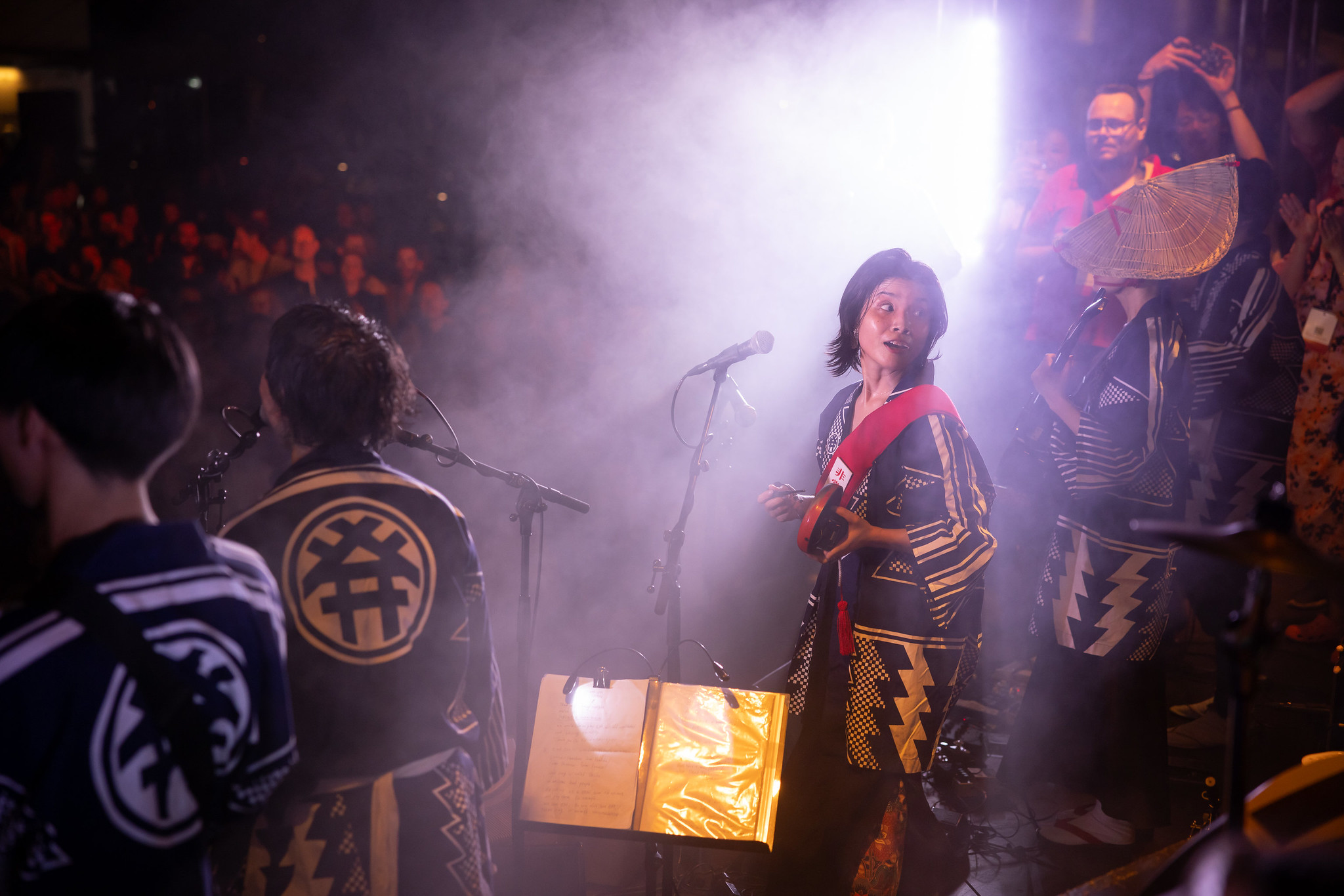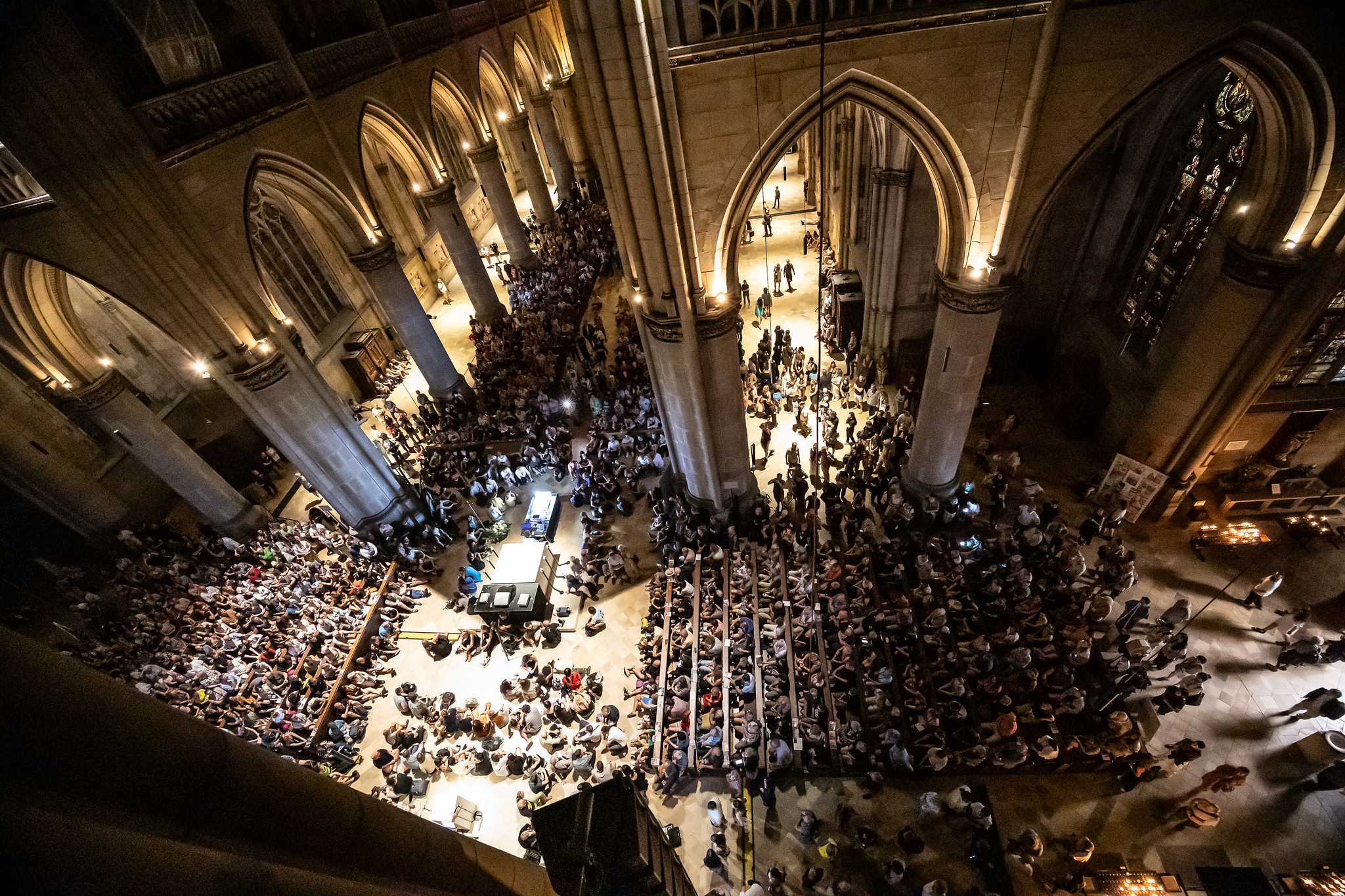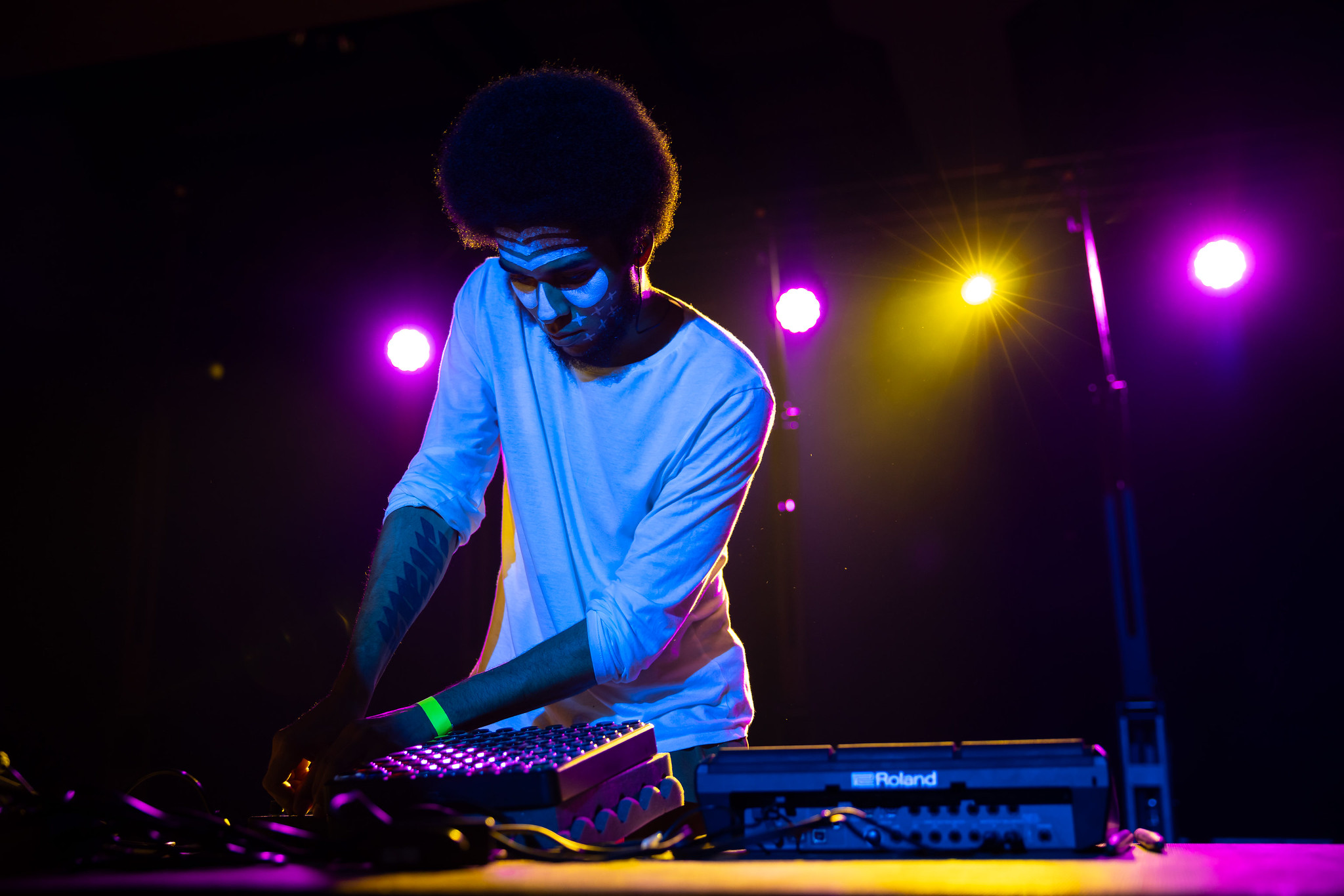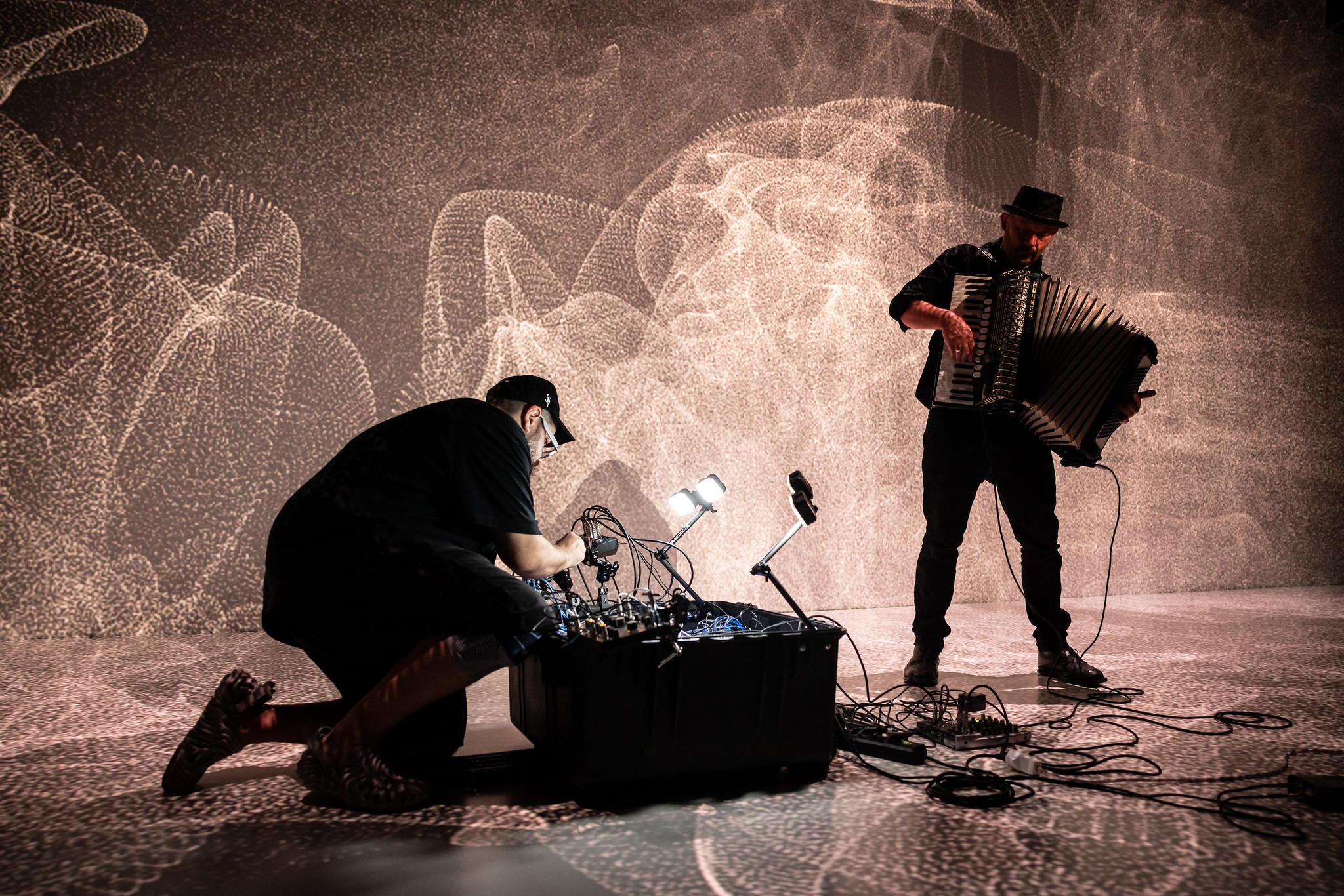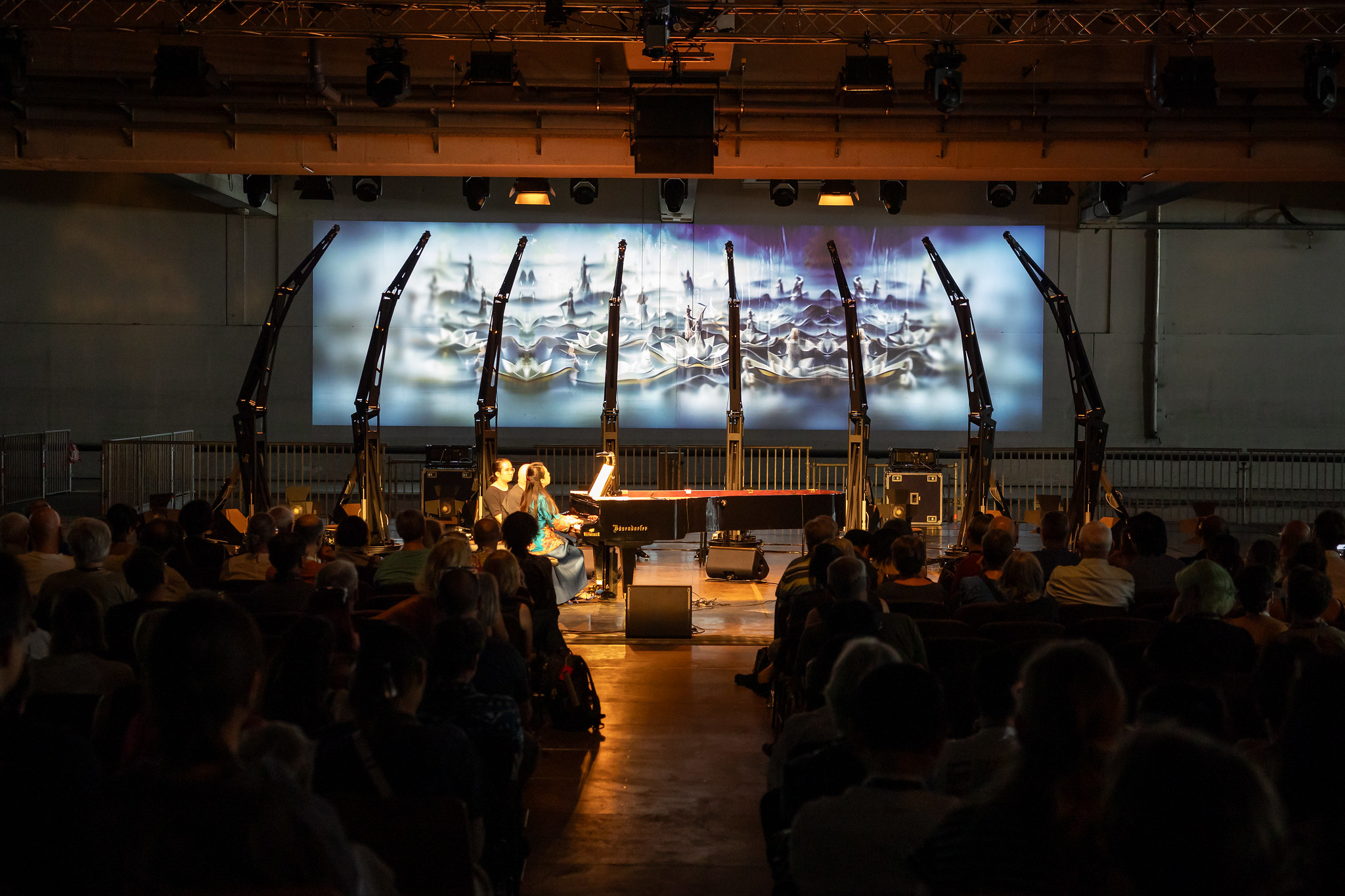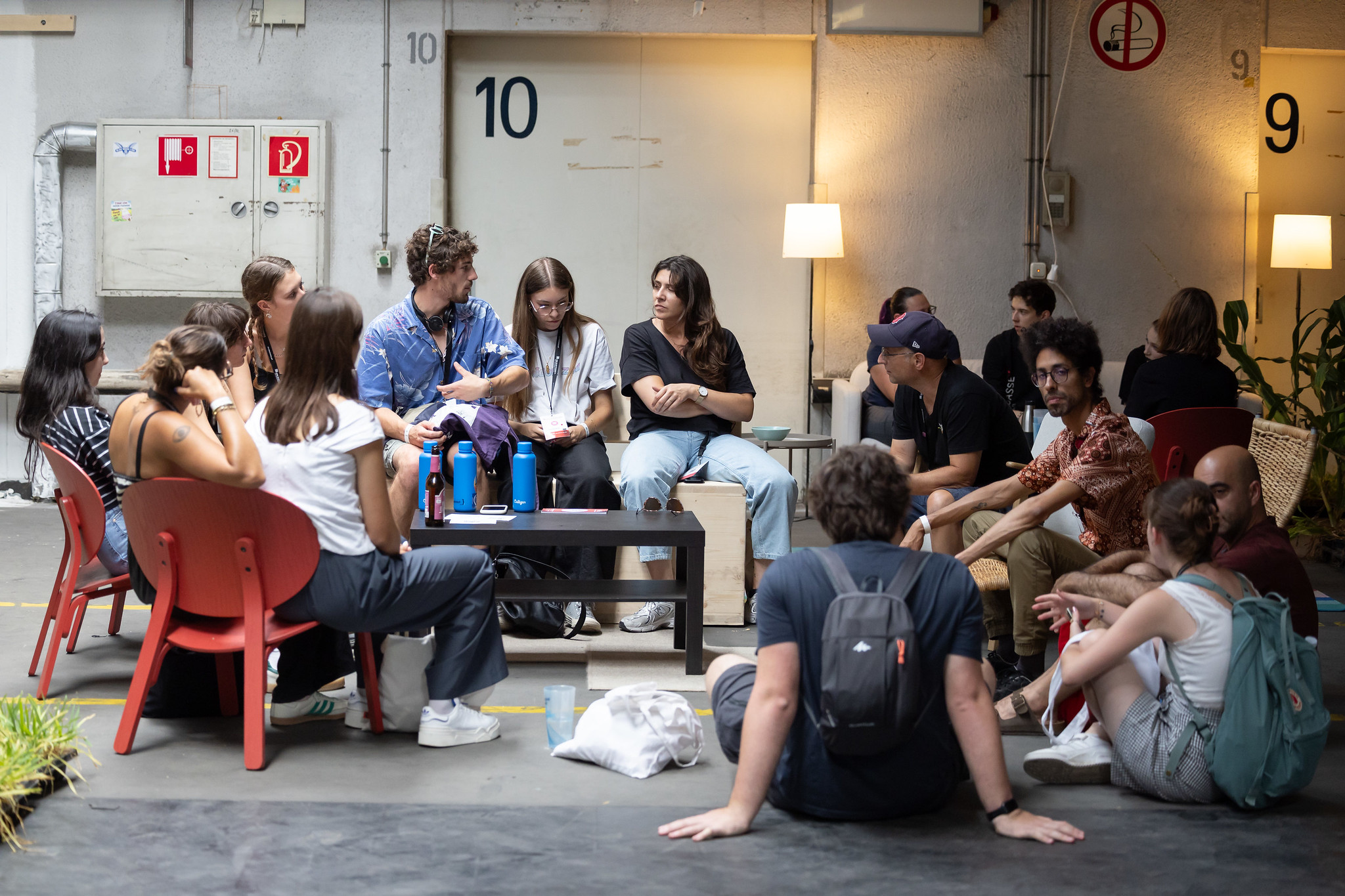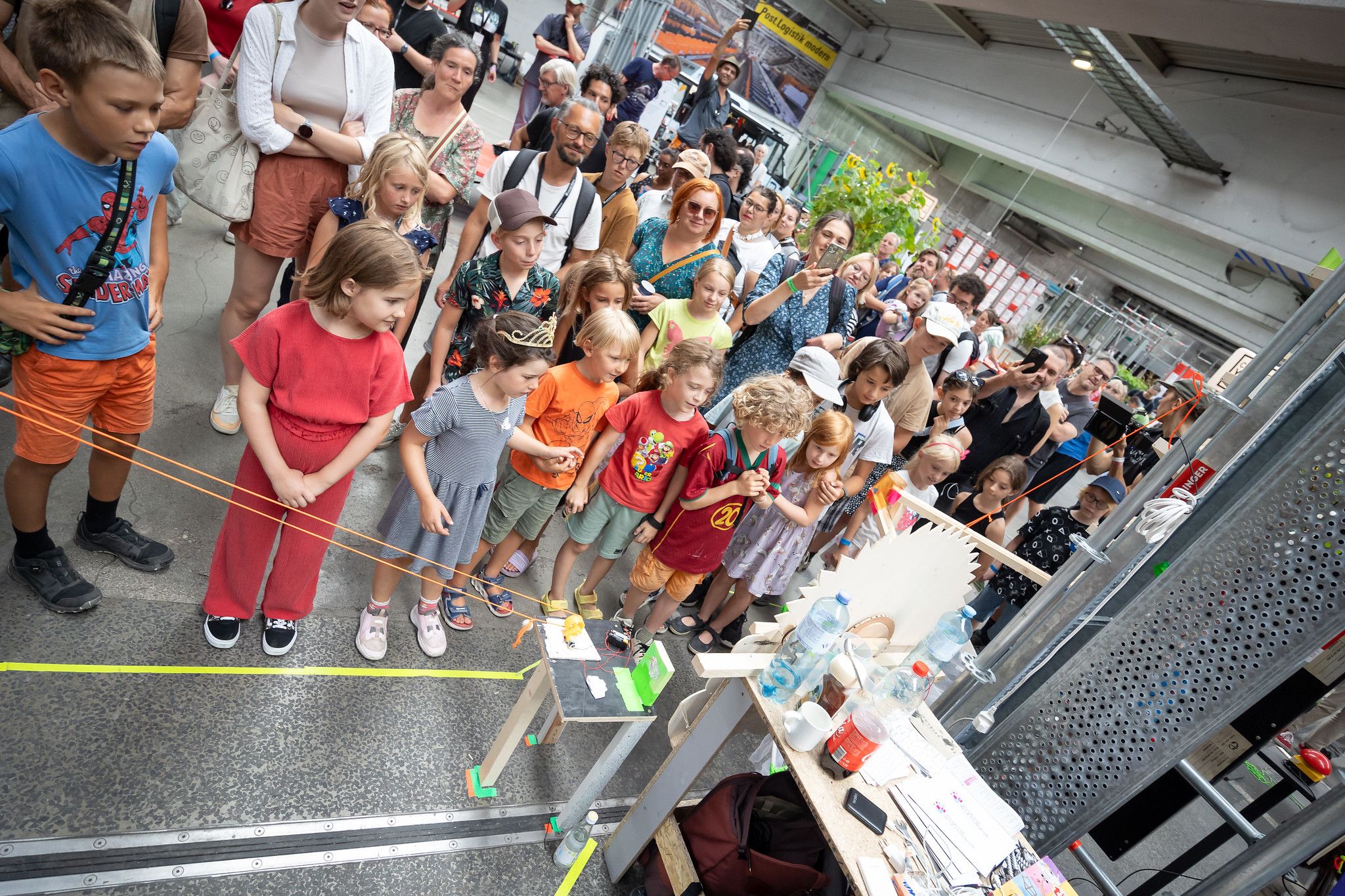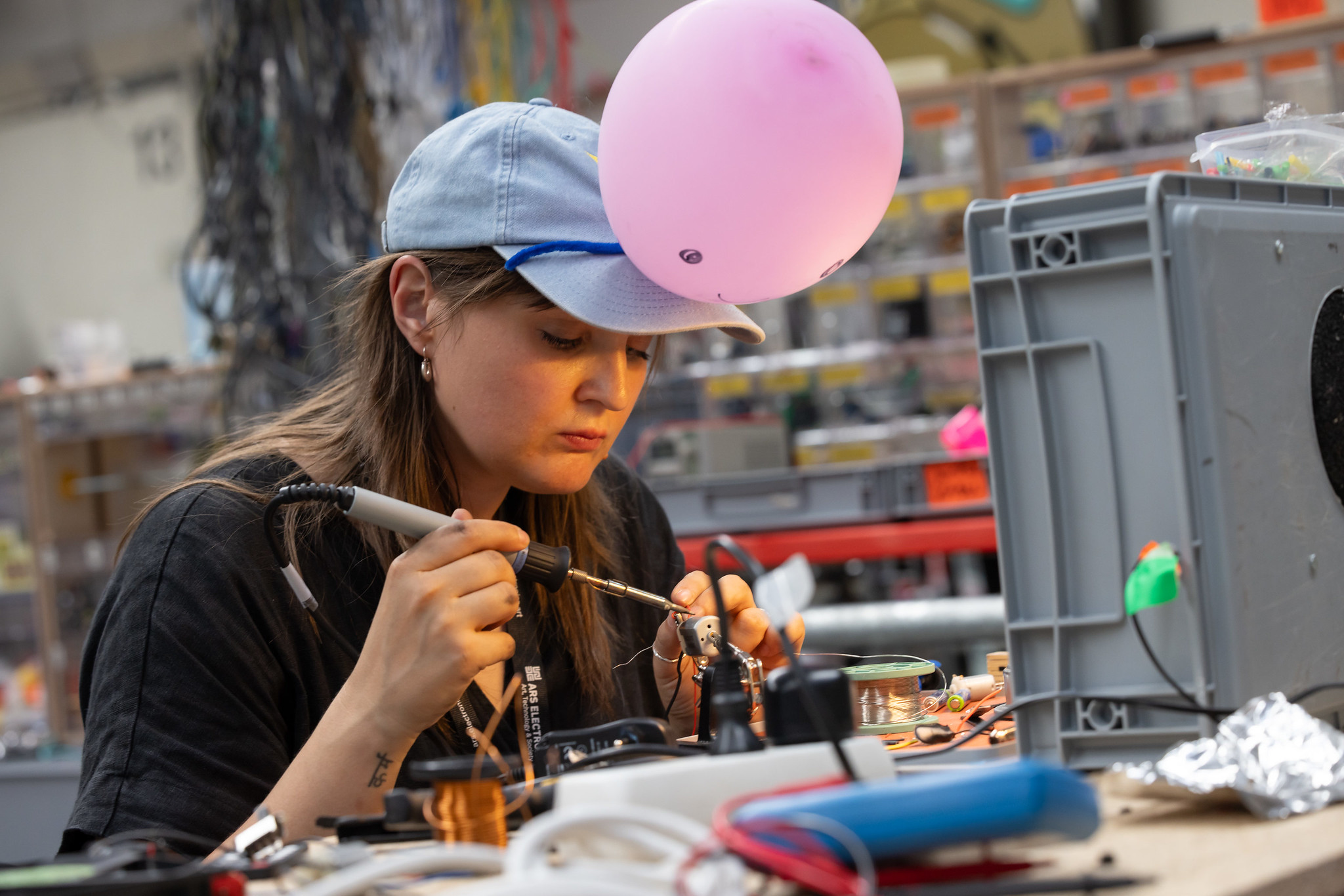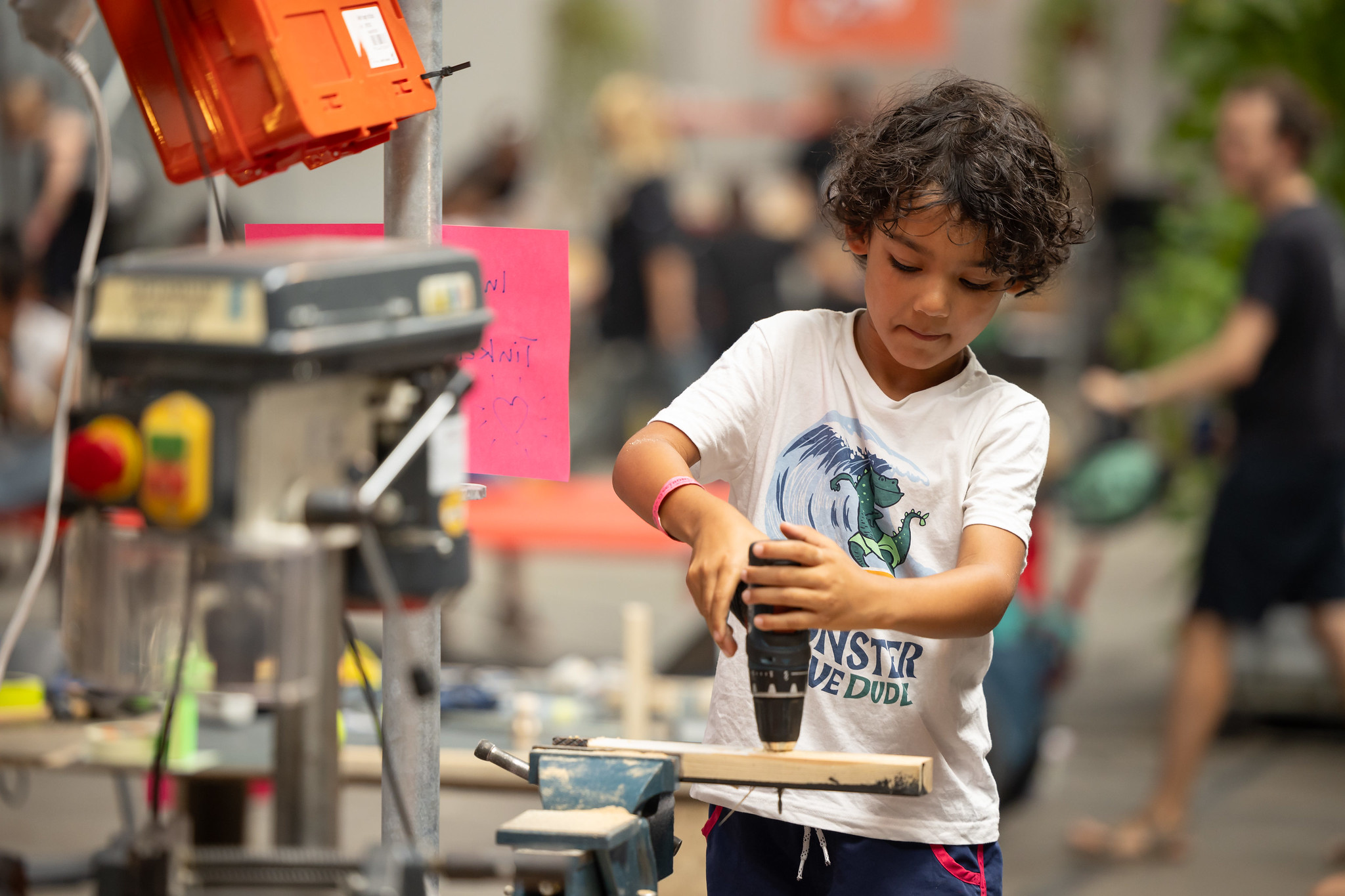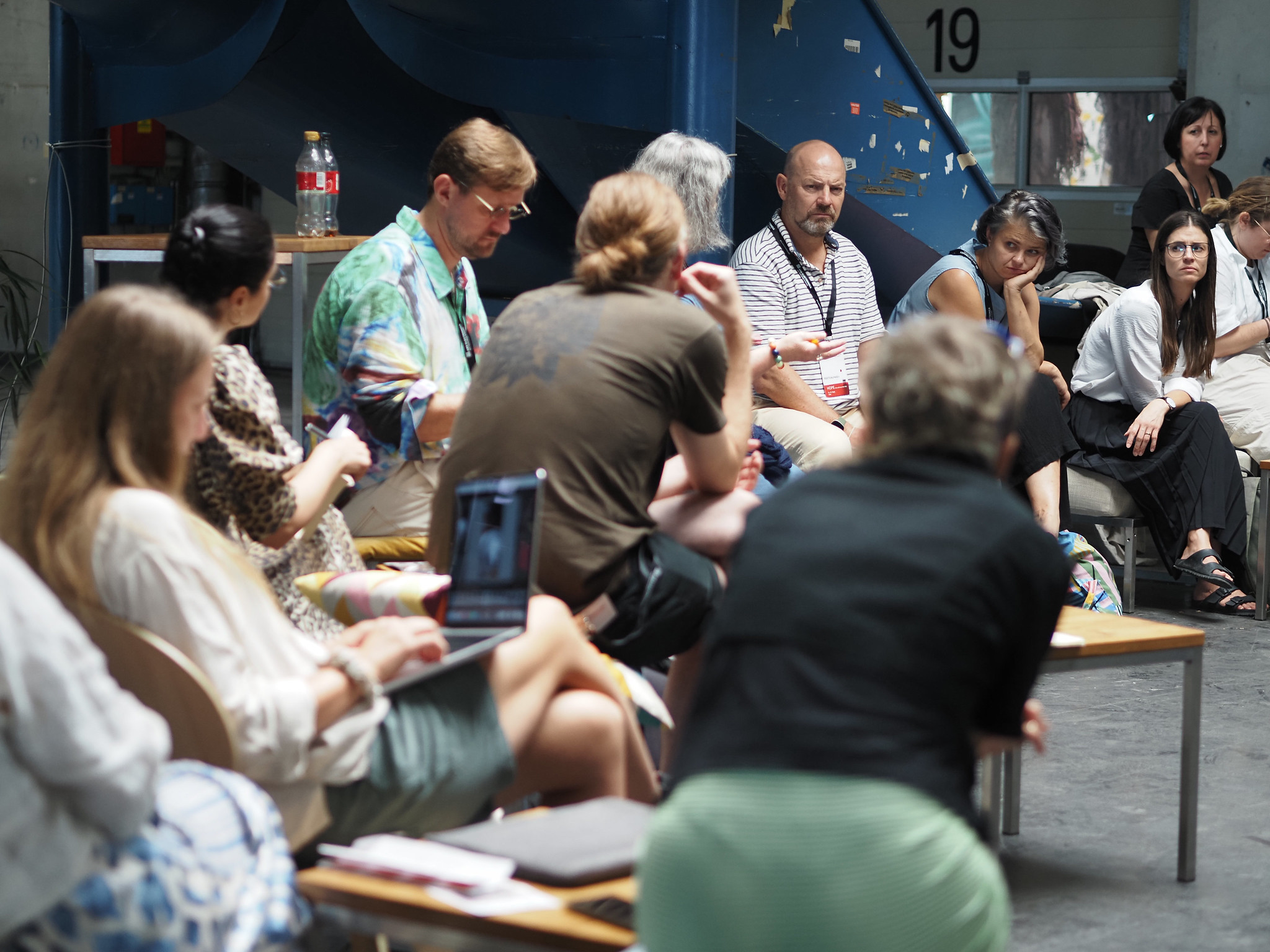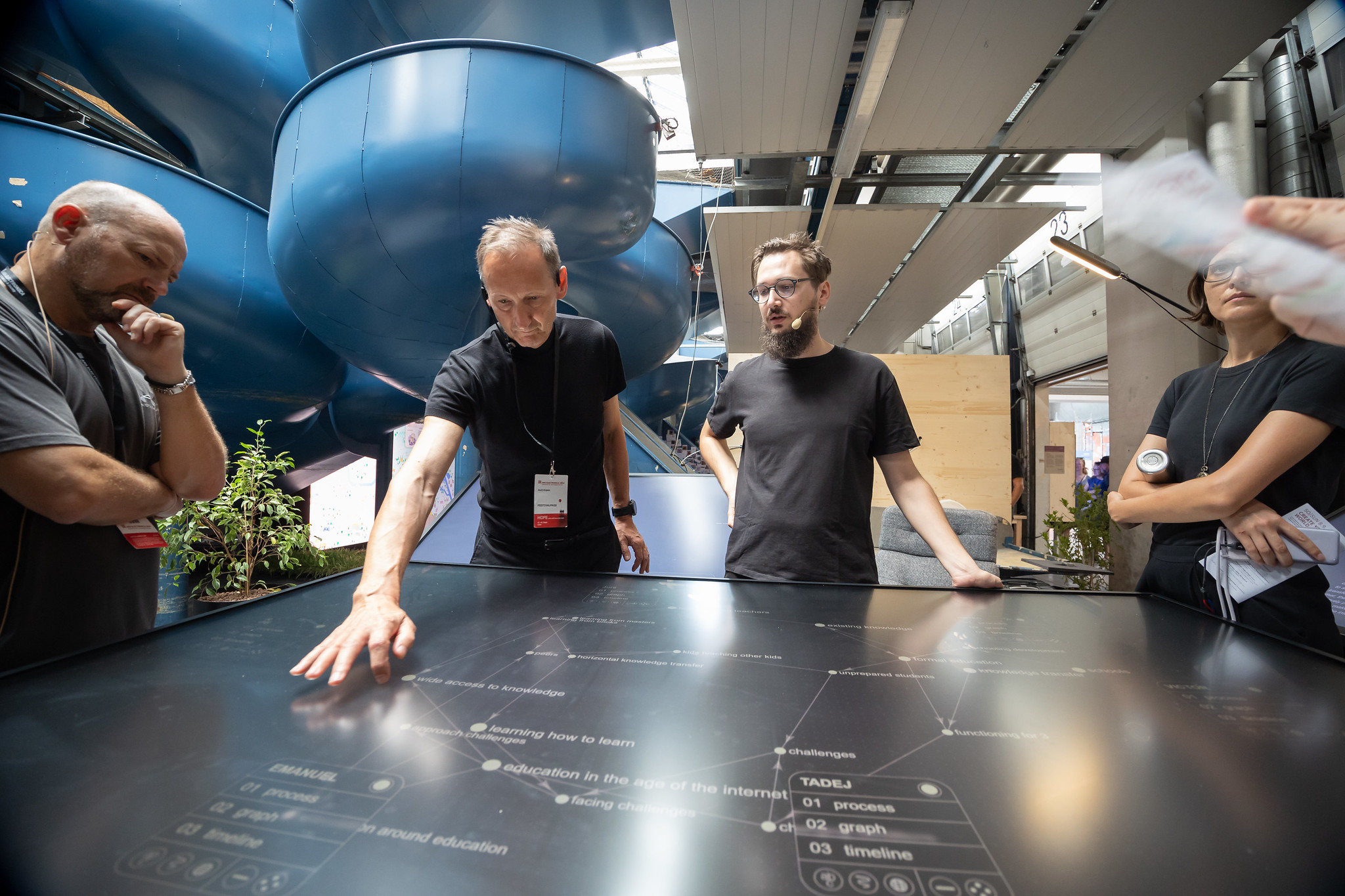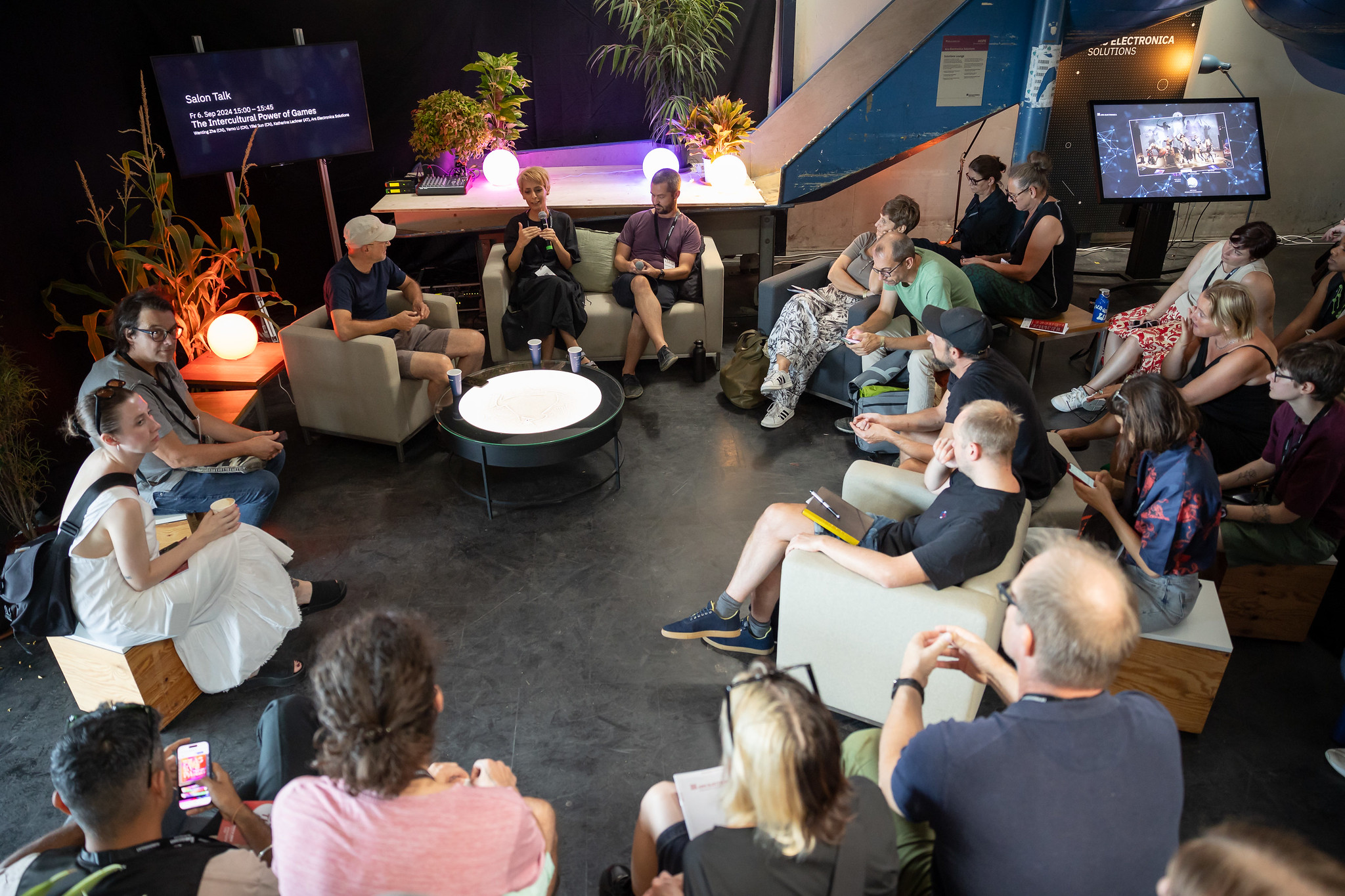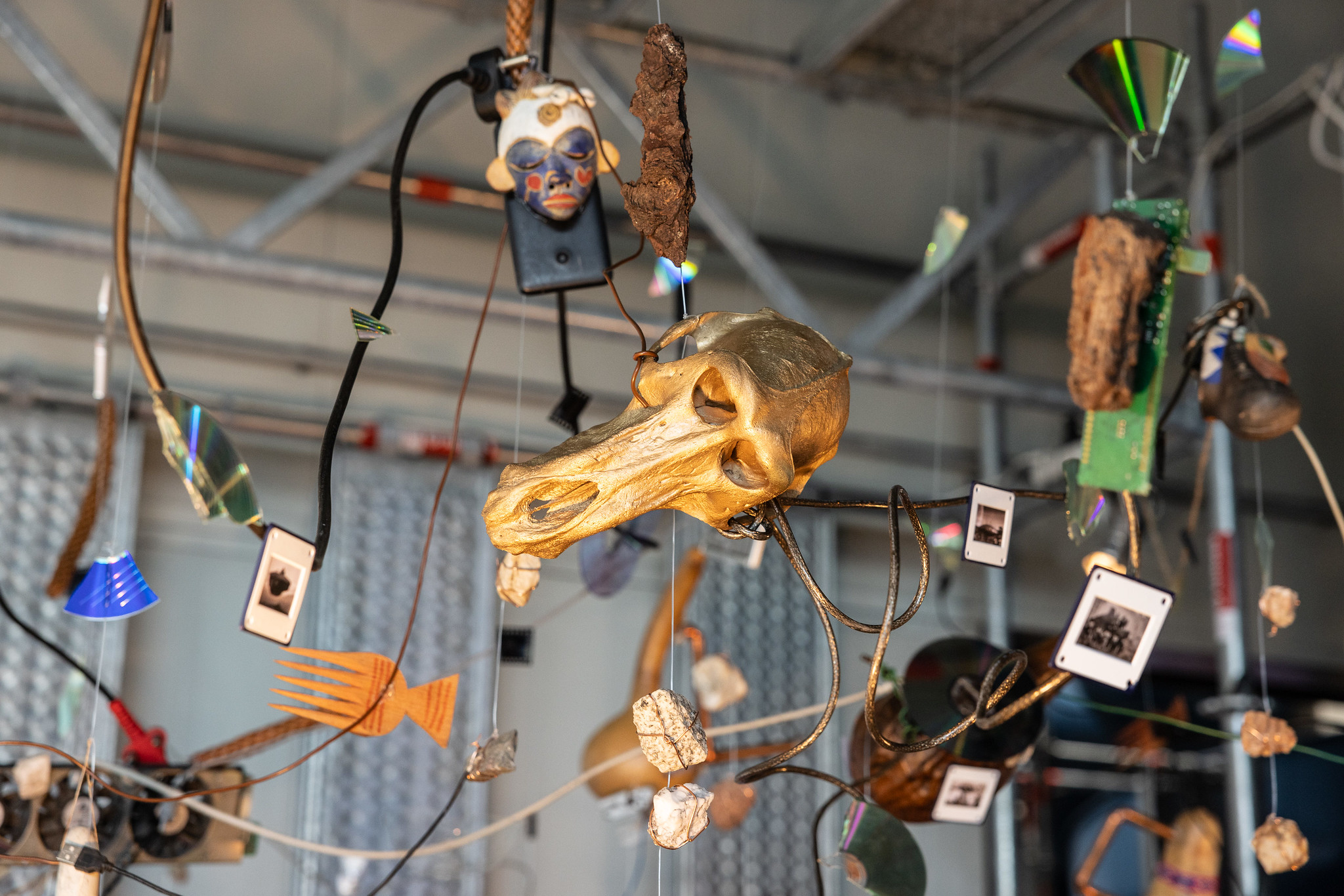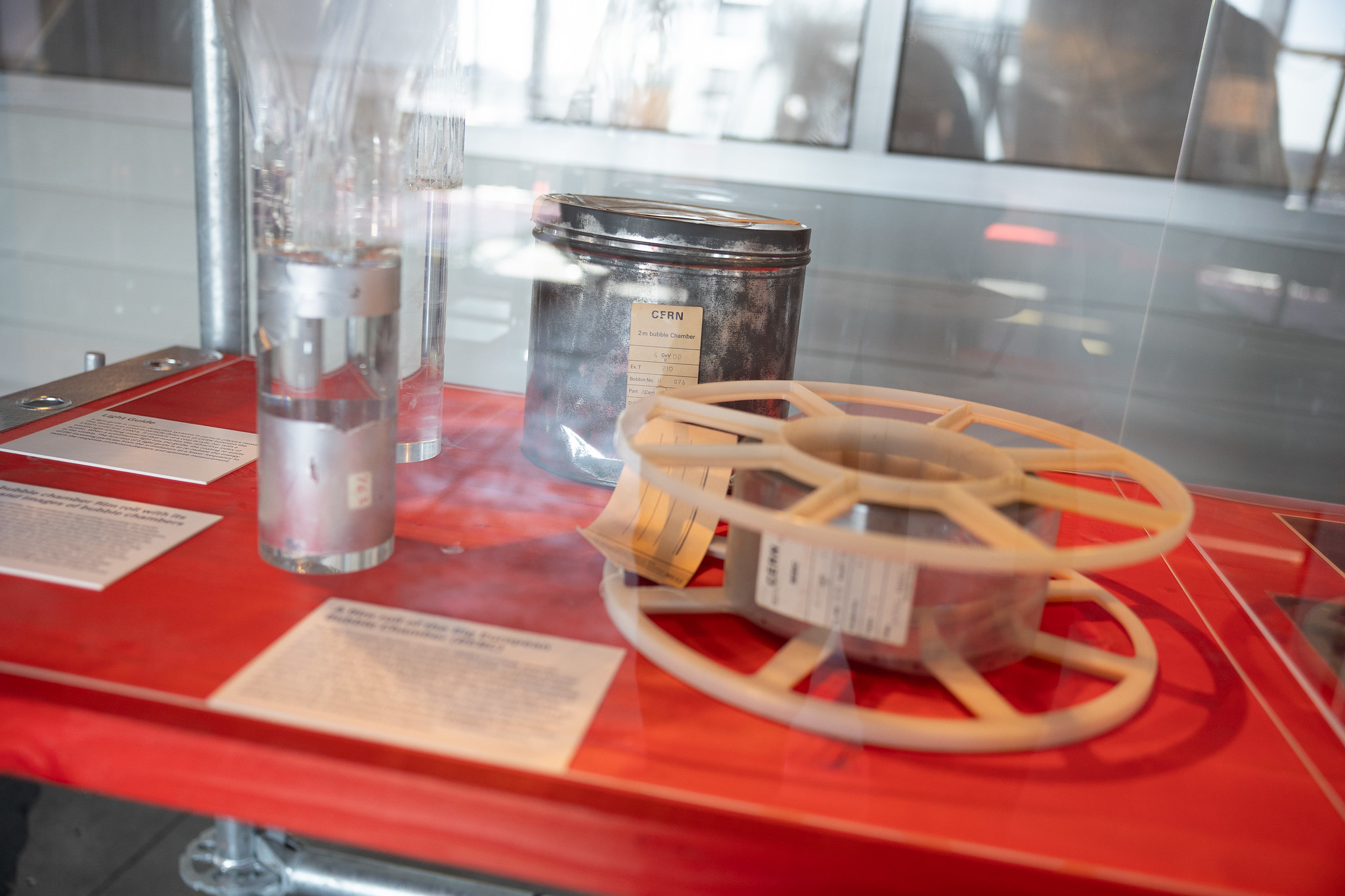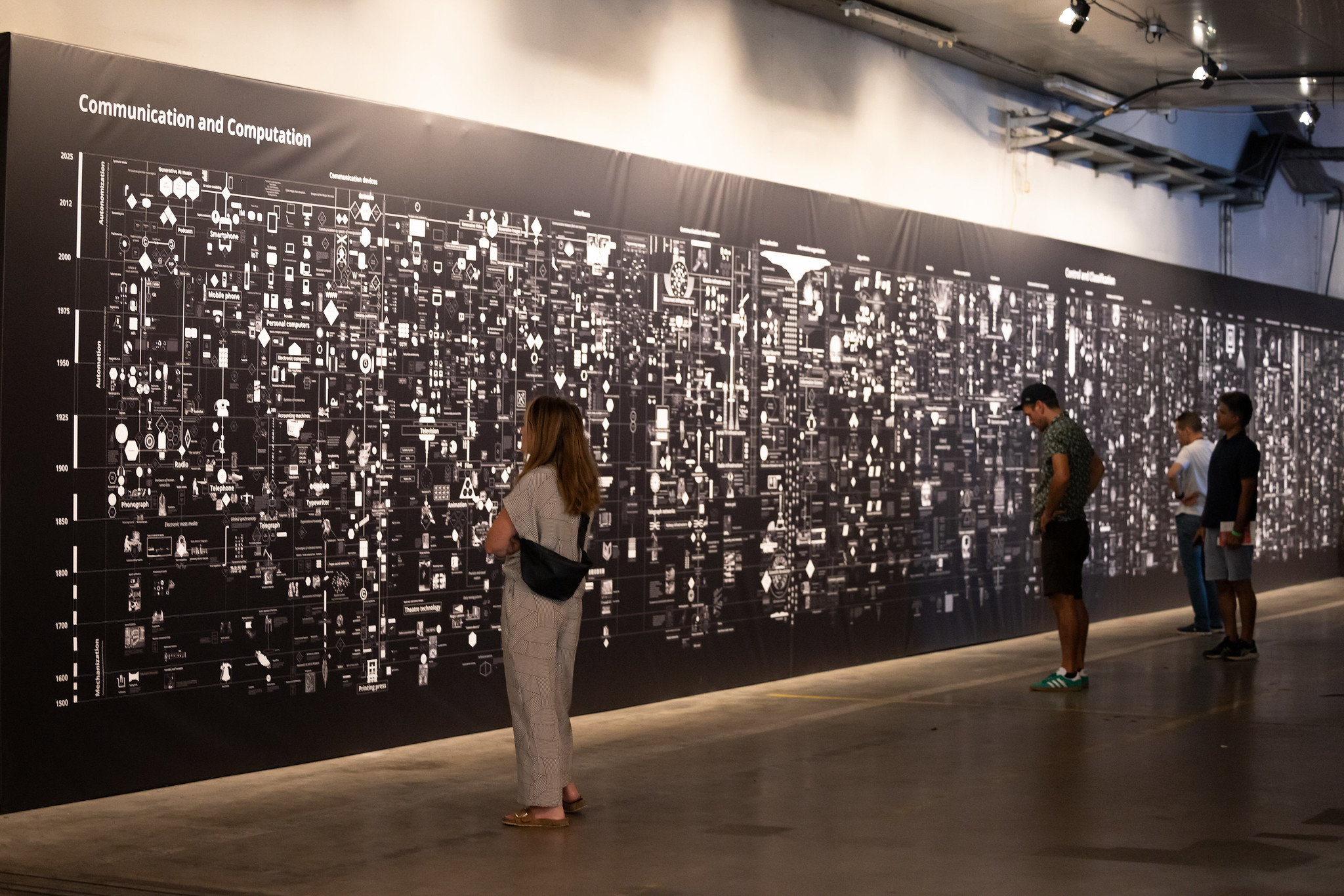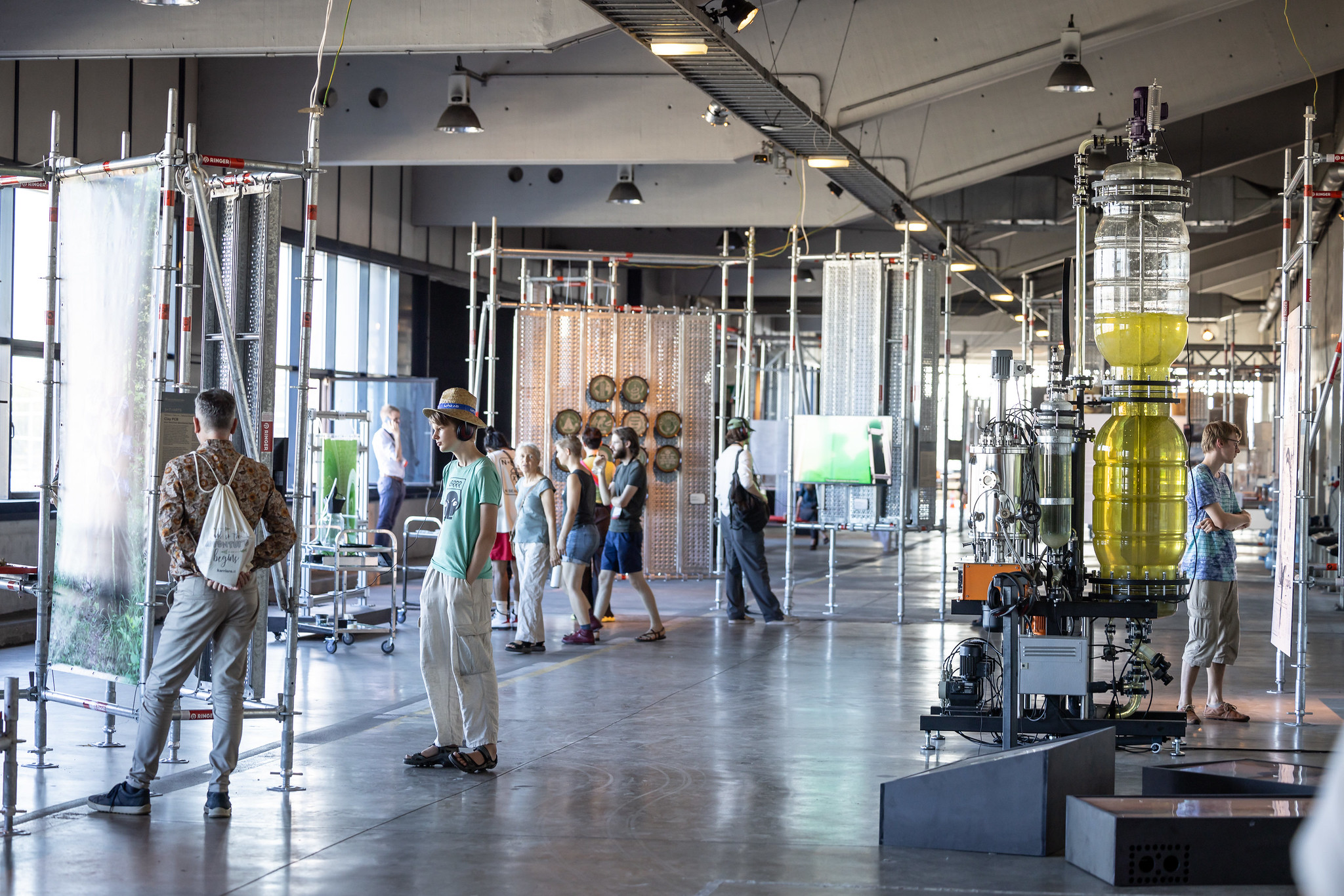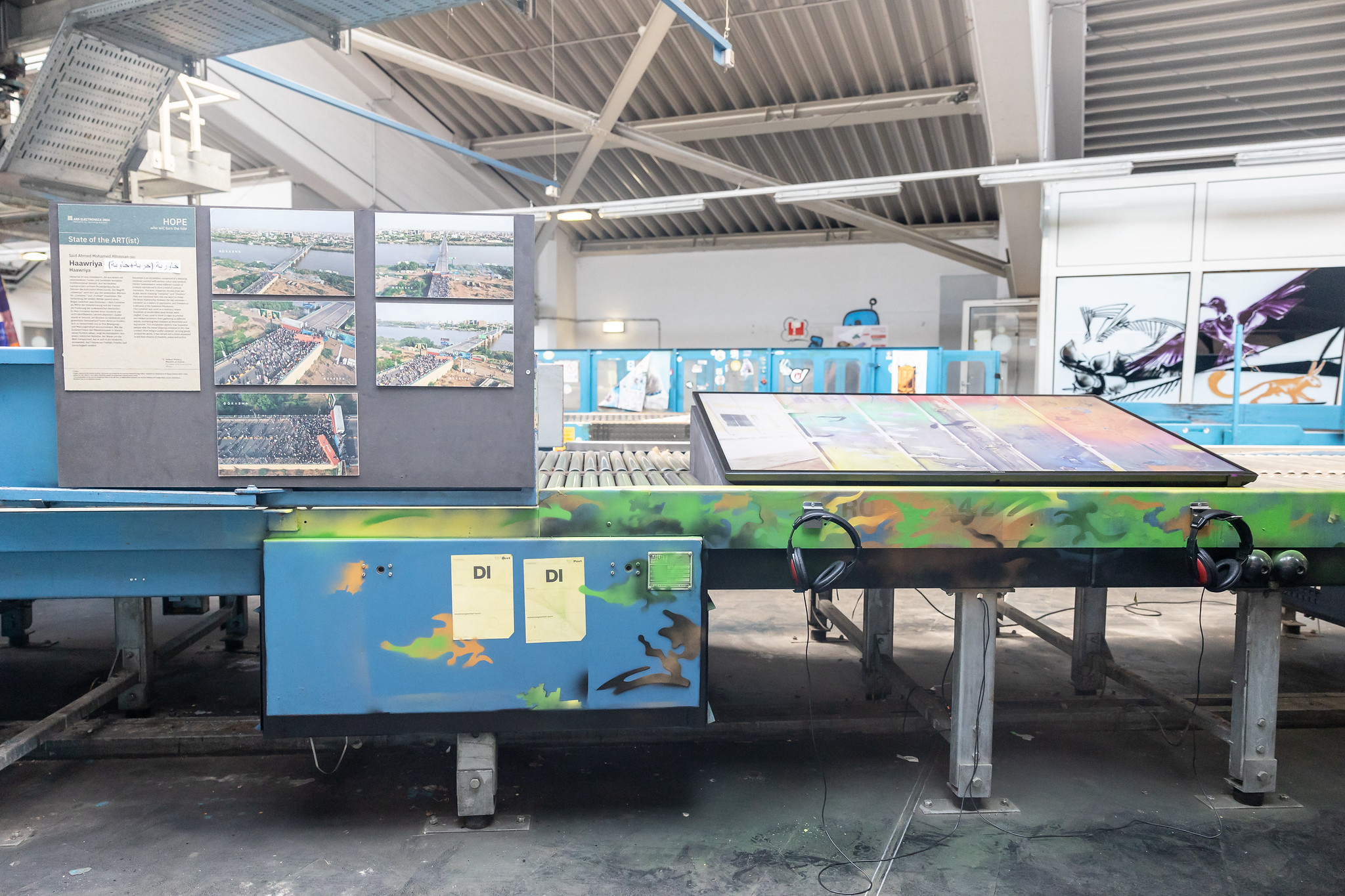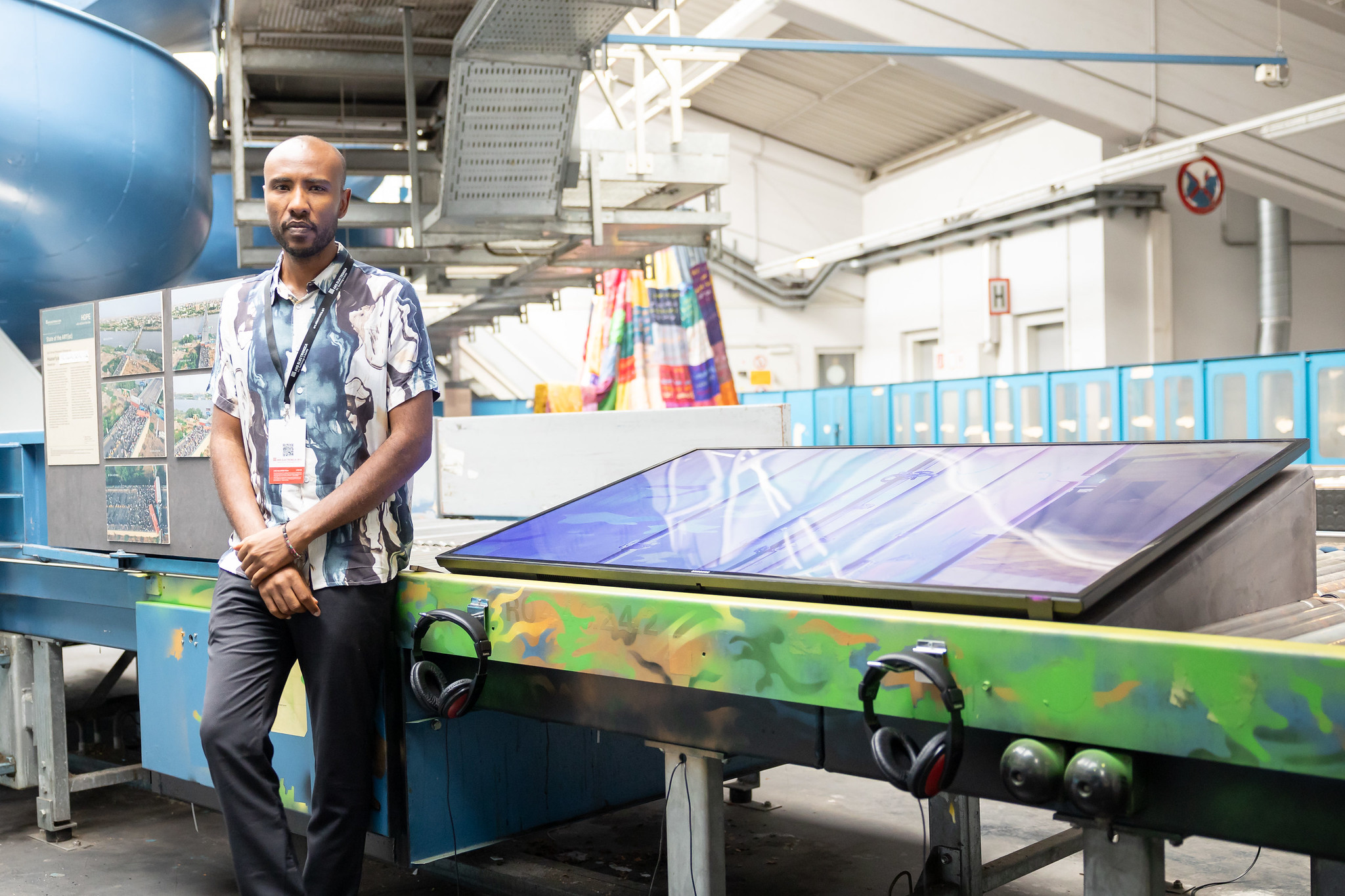In 2024, Ars Electronica once again used international open calls, exciting collaborations and the festival as a stage to show how art can highlight creative solutions to the pressing issues of our time.
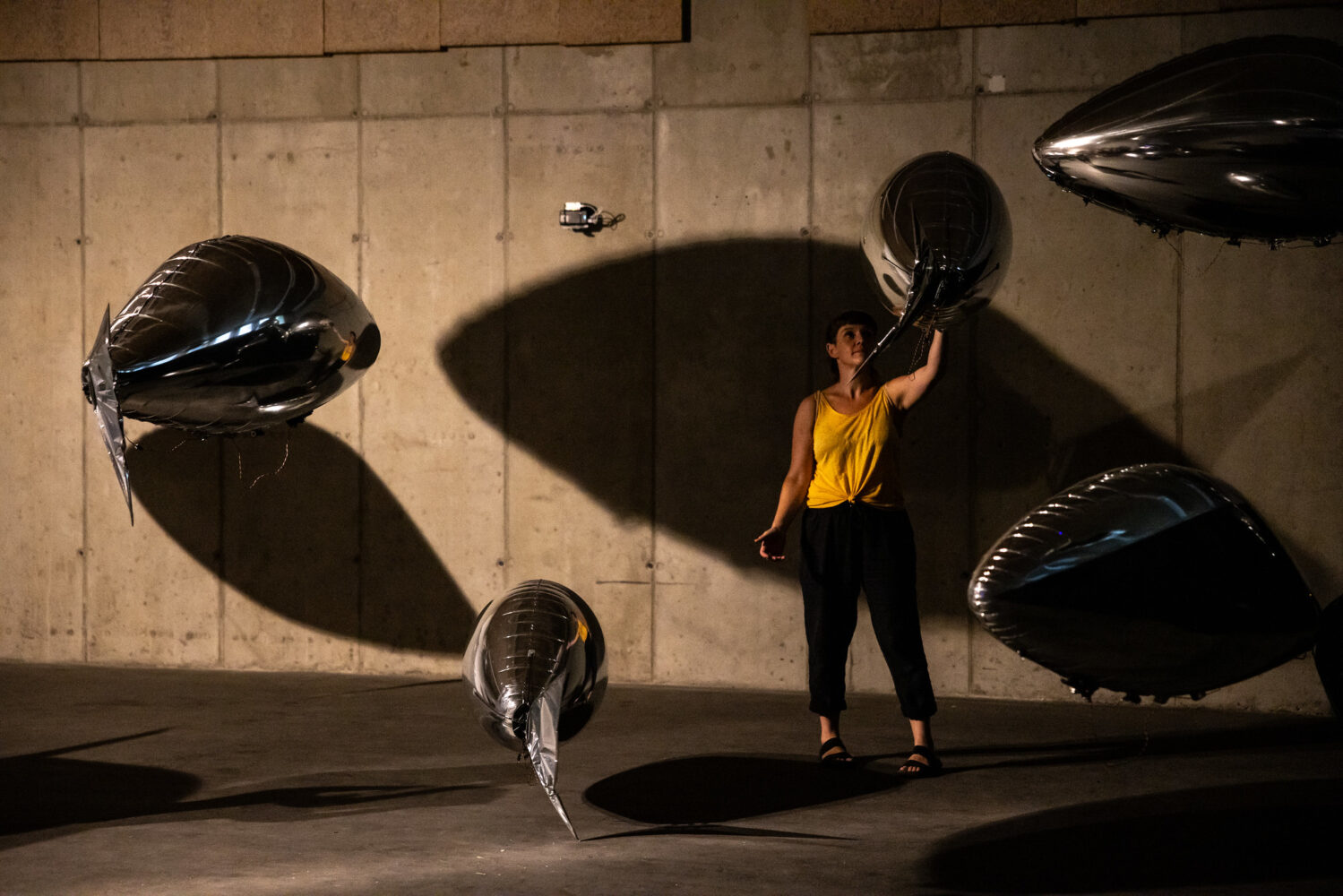
Year in Review 2024
As the year comes to a close, we take a moment to reflect on 365 days filled with exciting projects and events. We’ve captured the highlights of 2024 for you, centered around the three core pillars of Ars Electronica: art, technology, and society.
In 2024, our world was put to a severe test. Record temperatures, devastating natural disasters and escalating geopolitical tensions have highlighted the challenges of our time. In the face of these crises, hope often seems to be a fragile commodity. Yet art in particular opens up new perspectives and scope for action in the midst of these uncertainties. It becomes a bridge between past, present and future – highlighting injustices, challenging us to reflect and inspiring us to develop solutions.
With international open calls, exciting collaborations and the Ars Electronica Festival as a stage, we have turned our attention to artistic projects that inspire hope and promote innovation. This review is dedicated to the ideas, initiatives and people who have inspired, moved and encouraged us over the past year to create a better future – and shows how art can open up new paths.
The Ars Electronica Festival 2024: A space for confidence
The theme of this year’s Ars Electronica Festival, “HOPE – Who Will Turn the Tide”, was understood as an active creative task. More than 1,200 artists, scientists and activists from 67 countries gathered in Linz to share their visions of a more hopeful future. “HOPE” embodied the conviction that we as a society are able to change the course of events – through collective action and artistic reflection, the courage to change is born. This confident perspective, deeply rooted in the DNA of Ars Electronica, shaped the entire festival week in September.
In POSTCITY, the venue of the Ars Electronica Festival 2024, the theme exhibition “HOPE: the touch of many” opened a space that made the diversity and depth of this year’s festival theme tangible. In the underground labyrinth of the concrete bunker – between conveyor belts and concrete halls – an environment was created that inspired hope, cultivated it and called on its audience to take action.
As it does every year, the Prix Ars Electronica, the longest-running media art competition, showed how art and technology address critical issues of our time. Among the 2,950 entries, the works “Smoke and Mirrors” by Beatie Wolfe, which weaves music and data visualization into a poetic memorial to the environment, “Nosukaay” by Diane Cescutti, whose works explore the relationship between humans and nature, and “The Hardest Part” by Paul Trillo, who’s installations explore the balance between technology and humanity, were honored with the Prix Ars Electronica Award. For the first time, the exhibition of the prizewinning projects was shown at the Lentos Kunstmuseum Linz.
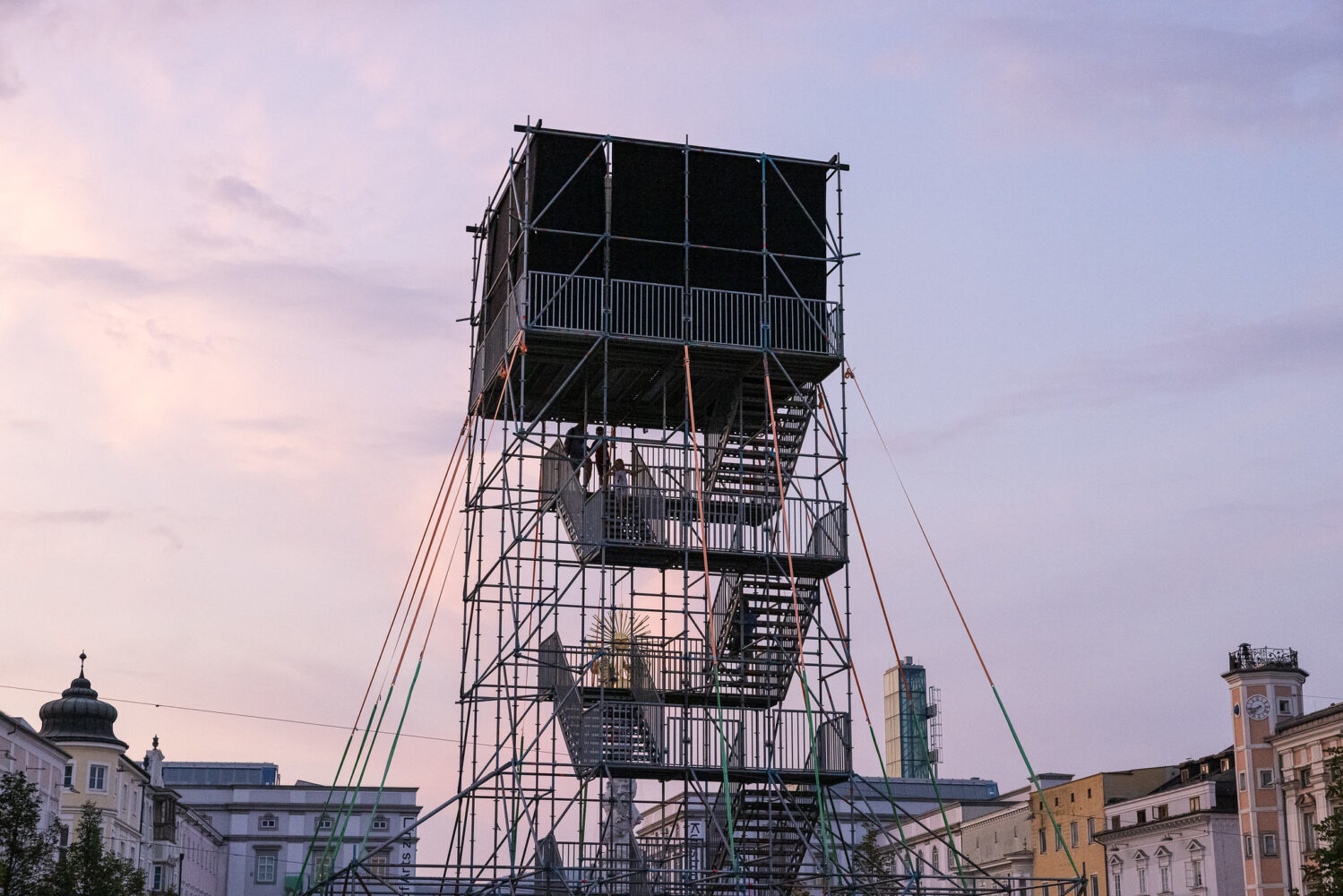
This year, the University of Art and Design Linz dedicated its campus to the topic of seeing: How do we perceive the world? What remains hidden from us? The tower on the main square of Linz, designed by Paul Eis and Maximilian Meindl, invited visitors to experience unexpected changes of perspective. The Moholy-Nagy University of Budapest, this year’s Special Featured Partner, expanded the discourse on artistic visions with its exhibition at the “splace” gallery.
Music is considered a universal language of our feelings, an existential source of hope and confidence. Between experiment and tradition, digital and analog, music was once again an integral part of the festival this year. Performances and sound installations such as the performance by artist Ei Wada with his ELECTRONICOS FANTASTICOS, or Pianographique by Maki Namekawa and Dennis Russell Davies showed how music creates connections, evokes emotions and opens up new spaces for reflection.
Hope grows where exchange, playful learning and individual creativity are encouraged. The Create Your World Festival, as a “festival within the festival”, invited young people in particular to explore technologies, develop ideas and reflect on new ways of life. Open labs and interactive stations provided space for experimentation and discussion. A special focus was on the mental health of young people, an issue that becomes particularly relevant in times of crisis.
The Ars Electronica Animation Festival also set powerful accents. Animations became a mouthpiece for optimism and resistance, making visible how artists use modern technologies to address profound social issues. In doing so, they dealt with social and technological challenges, reflected on their own role and formulated criticism of existing systems with visual precision.
In the Art Thinking Lounge, ideas and people came together. Hope was evident in the conversations and encounters, where new perspectives and shared visions emerged. The Town Hall Meetings created a space where artists, scientists and experts came together to exchange ideas, challenges and visions.
Open calls, awards and residencies: Impulses for a better future
Despite numerous global crises, there are initiatives worldwide that, through their commitment, open up new perspectives and show ways in which a future worth living can be shaped. They make it clear that the future is not just a collection of challenges, but also an opportunity to develop solutions together and initiate positive change. At the same time, art and cultural work also critically point out where developments need to be questioned, and use provocative approaches to stimulate important discussions. Through their projects and approaches, they inspire people to take responsibility, shape change and actively take the future into their own hands.
The European Commission’s STARTS initiative shows how interdisciplinary collaboration can produce new solutions. It promotes the connection between science, technology and art to solve societal challenges. In 2024, the winning projects “Arts at CERN” by CERN and “Calculating Empires: A Genealogy of Power and Technology, 1500-2025” by Kate Crawford and Vladan Joler were honored with the STARTS Prize.
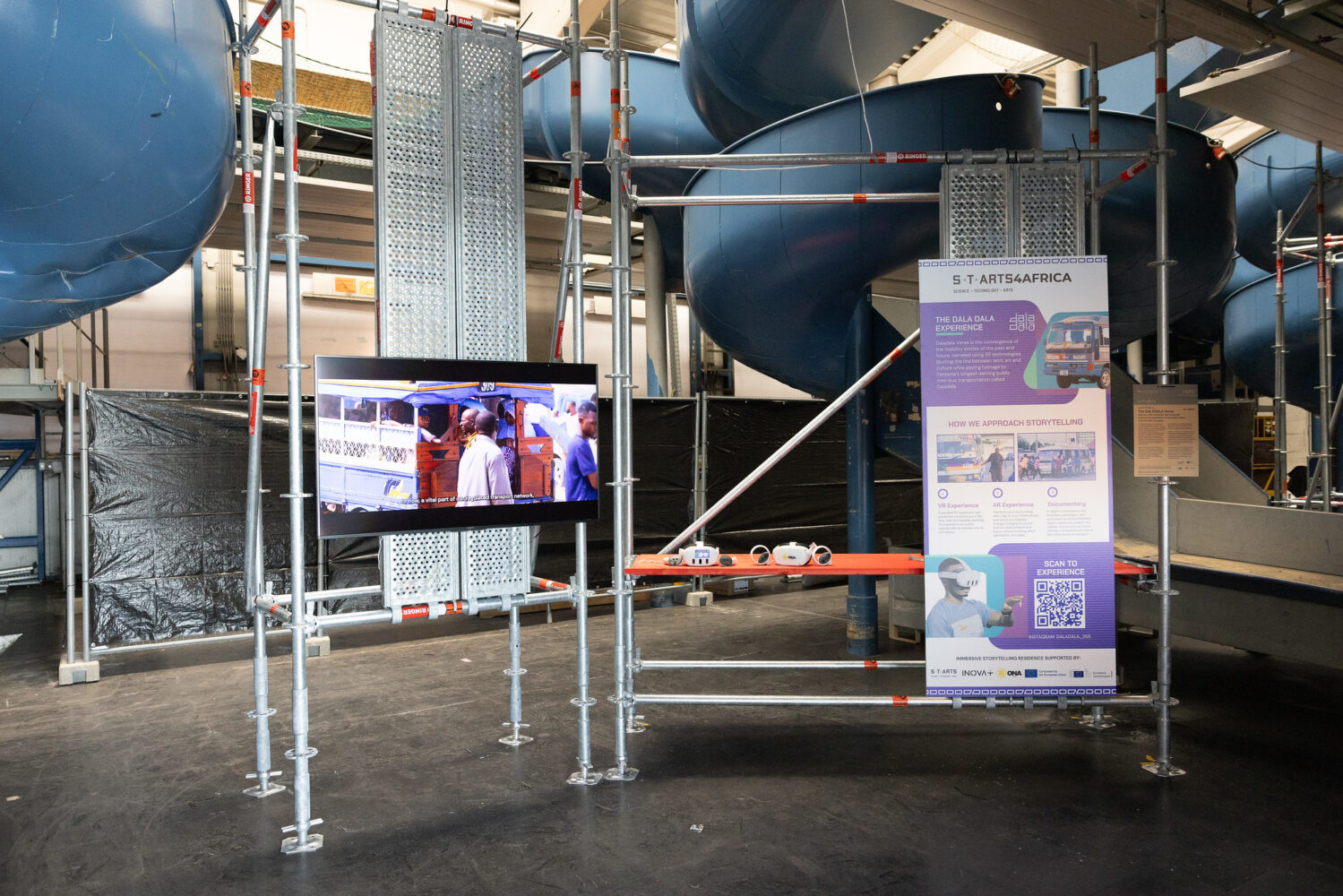
STARTS4Africa, the first STARTS residency program to promote African innovation at the interface of science, technology and art, was implemented in collaboration with INOVA+, GLUON and PiNA. It resulted in eight artistic residencies in Nigeria, Senegal, Ghana and Tanzania, bringing together local and international artists with regional actors to explore the relationships between technology, art and culture.
This year, the “Balot NFT” project by CATPC was awarded the STARTS Prize Africa as part of the STARTS4Africa program. The project uses NFT technology to empower local communities to digitally reclaim stolen cultural property and generate proceeds to buy back land.
This year, too, the State of the ART(ist) project, in cooperation with the Austrian Foreign Ministry, gave a voice to suppressed creative voices. The grand prize was awarded to the work “Haawriya حاورية) حاوية+ حرية)” by Said Ahmed Mohamed Alhassan: a painted cargo container from Sudan that became a memorial in the revolution of 2019. Originally a symbol of the blockade and suffering, Alhassan transformed it into a symbol of resistance and freedom of expression.
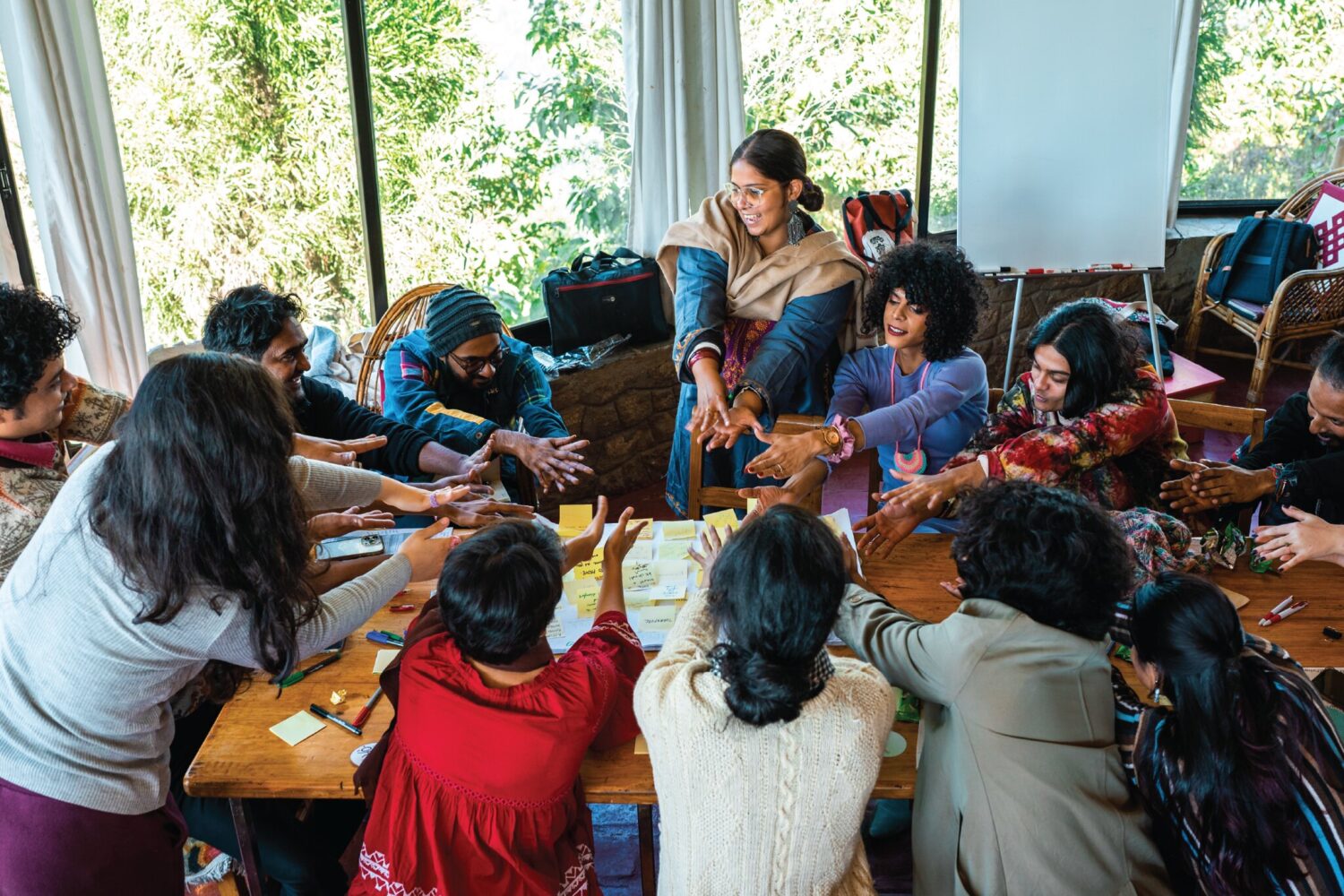
The Digital Deal Award was also presented among all the submissions to the Open Call State of the ART(ist). “The Queer Muslim Project (TQMP)” was honored with the Digital Deal Award 2024 for its groundbreaking work within the LGBTQIA+ community in Asia. Using digital and cultural platforms, TQMP actively fights harmful stereotypes and creates spaces where queer storytellers can be heard. With programs such as “Language is a Queer Thing” and the “QueerFrames Screenwriting Lab,” TQMP demonstrates how digital media can be used to drive social change and strengthen the defense of human rights.
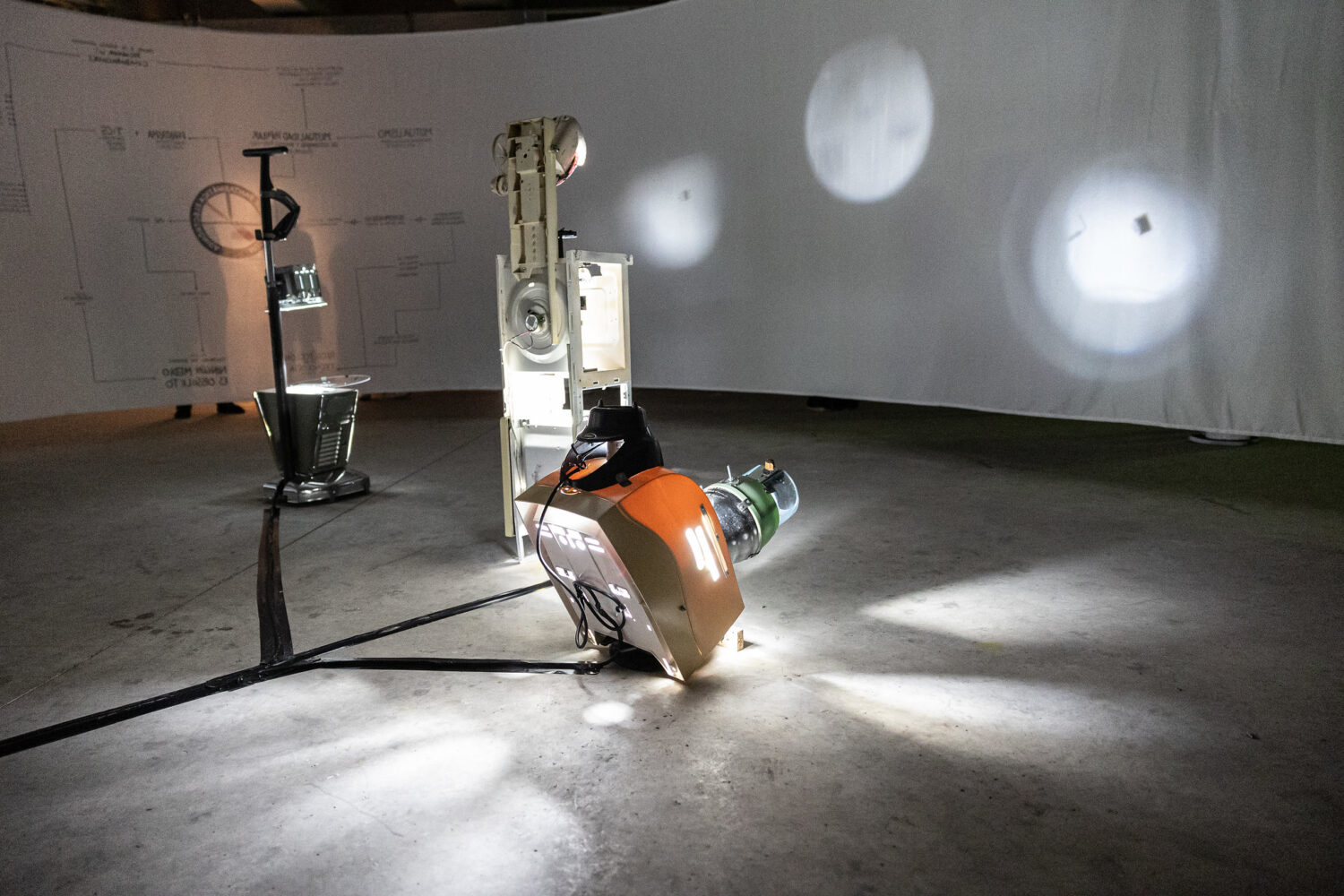
The projects of the CIFO x Ars Electronica Award enriched the discourse of the festival theme “HOPE – who will turn the tide” with a special Latin American perspective, while also demonstrating the versatility of Latin American media art. In “Mutualidad de Fantasmática Electrónica,” electronic waste was transformed into art, raising awareness of the global problem of waste and resource utilization. For this project, a group of local electronic artists worked with five different media labs in Argentina to reintroduce components from discarded devices into the art and technology community.
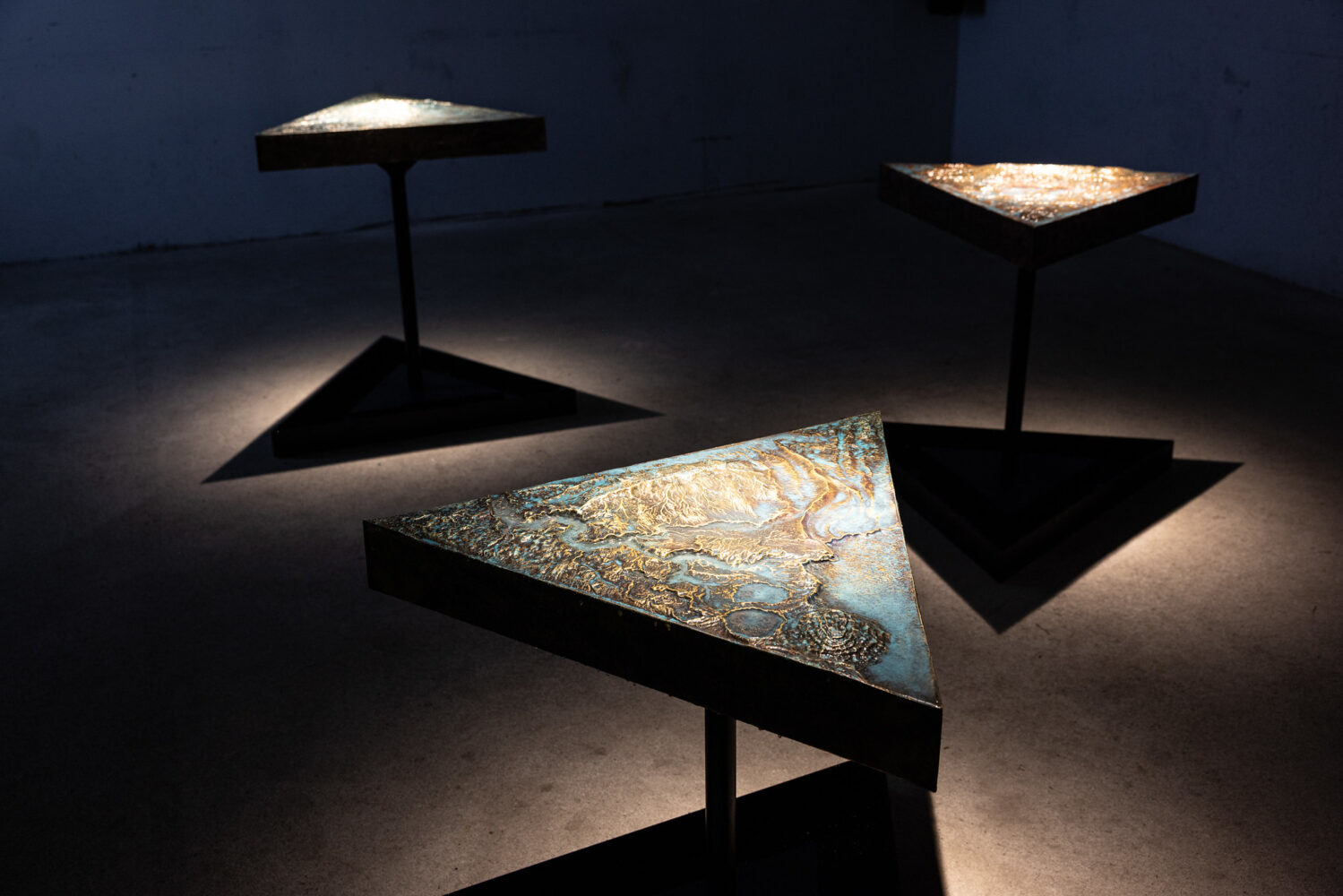
Guely Morató Loredo‘s project Triangle of Sacrifice addressed the social and ecological consequences of lithium mining in the South American “Lithium Triangle” between Argentina, Bolivia and Chile.
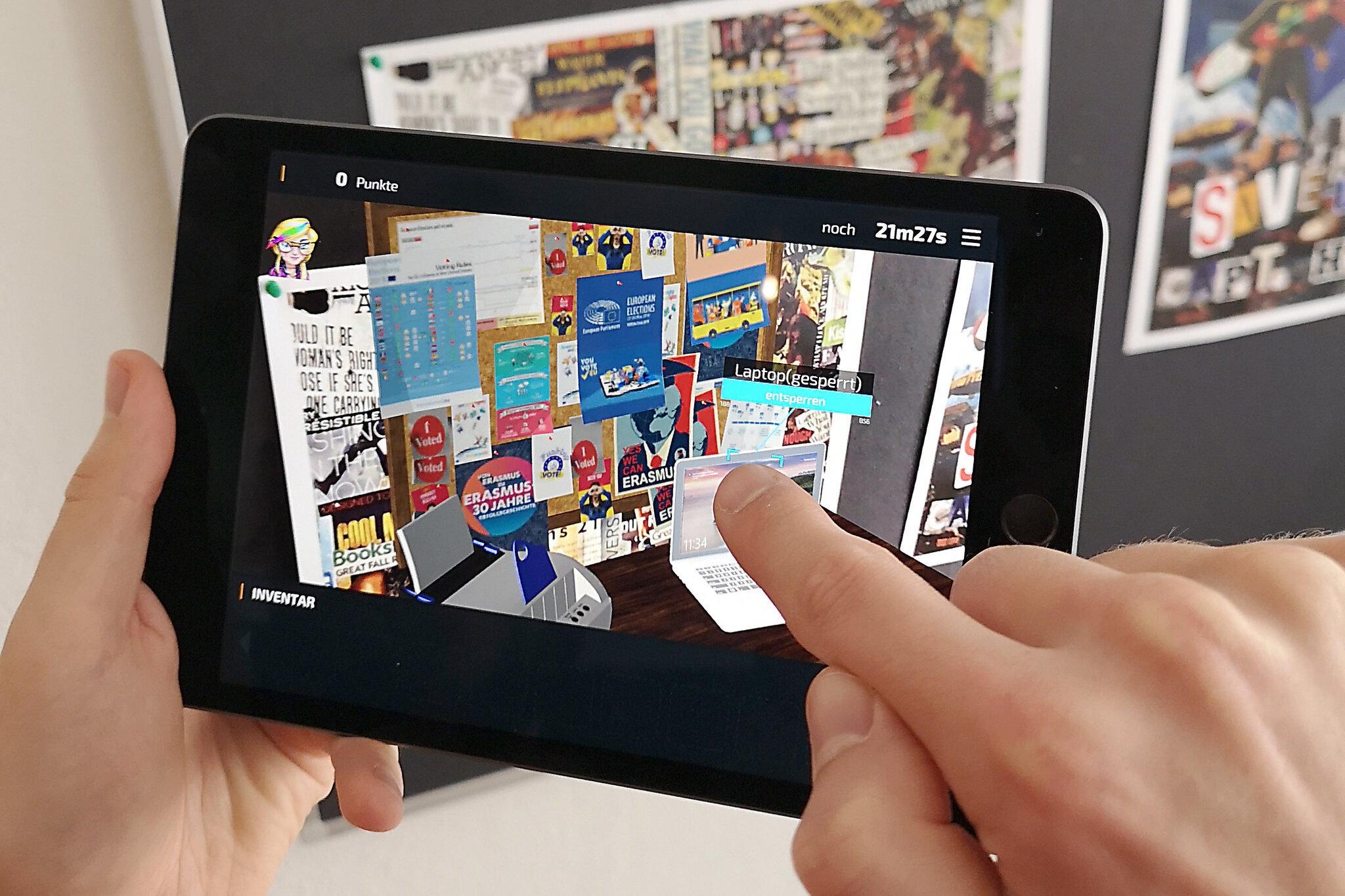
Lastly, the CultTech x Ars Electronica Award drew attention to projects that are driving digital change in the cultural and creative industries while promoting sustainable technological developments. The grand prize was awarded to the augmented reality game Escape Fake by the Polycular collective. This immersive game offers young people and their educators the tools to recognize fake news and develop effective counter-strategies.
The European Digital Deal is a three-year investigation, led by Ars Electronica, into how the accelerated introduction of new technologies is changing or undermining democratic processes. This year, the European Digital Deal initiative has announced twelve residencies for artists. One of these was awarded to the Polish artist Martyna Marciniak at Ars Electronica. She is investigating the handling of facts and misinformation under the guiding question: “What’s new/s?” The first insights into her artistic results were presented in 2024, before the complete work will be shown at the Ars Electronica Festival 2025.
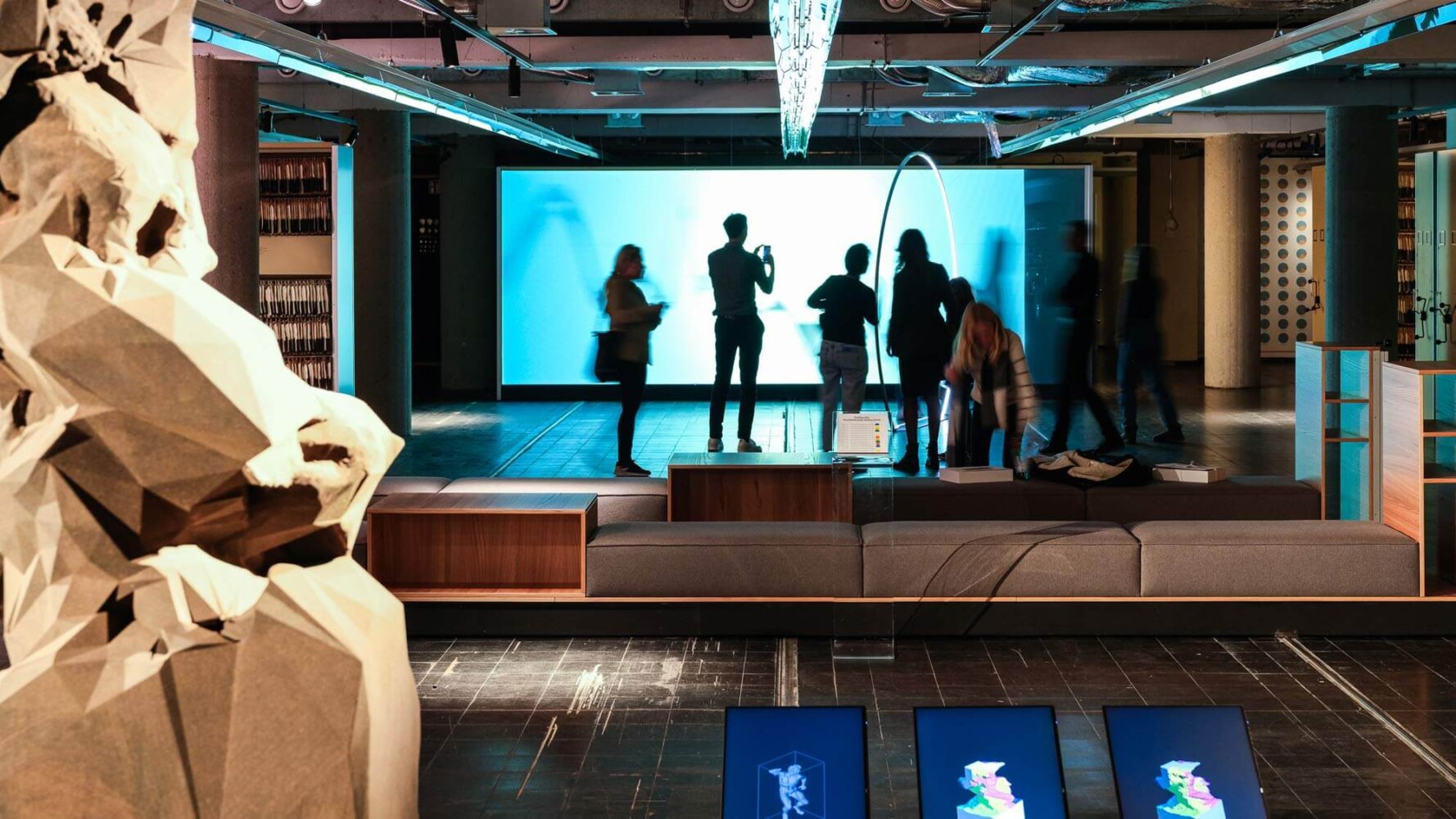
Ars Electronica Export realized nine exhibitions and 62 events in 26 countries in 2024. Highlights included the opening of the Çubuklu silo in Istanbul, the successful exhibition “Catalyst Lab – The Making of Tomorrow” – from which two works were included in the permanent collection of the European Patent Office – as well as collaborations with Taiwanese institutions. The Animation Festival On Tour reached over 3000 fans in 19 countries.
Ars Electronica Center: Preservation and experience
In 2024, the Ars Electronica Center once again became a place where art, technology and cultural heritage came together. Projects were developed here that explored the past and provided inspiration for the future.
The “Notre-Dame Immersive” project showed how digital technologies can help to preserve and make accessible our cultural heritage. After the fire at Notre-Dame Cathedral in 2019, the world-famous building was reconstructed in a virtual space using state-of-the-art technologies. Together with Iconem and Histovery, the Ars Electronica Futurelab presented an impressive 3D model of the cathedral in Deep Space 8K. Visitors were able to experience the Gothic architecture and its artworks in previously unknown detail and from new perspectives. Those who live in the USA can experience the project in the form of a video at the Museum of Fine Arts in Houston.
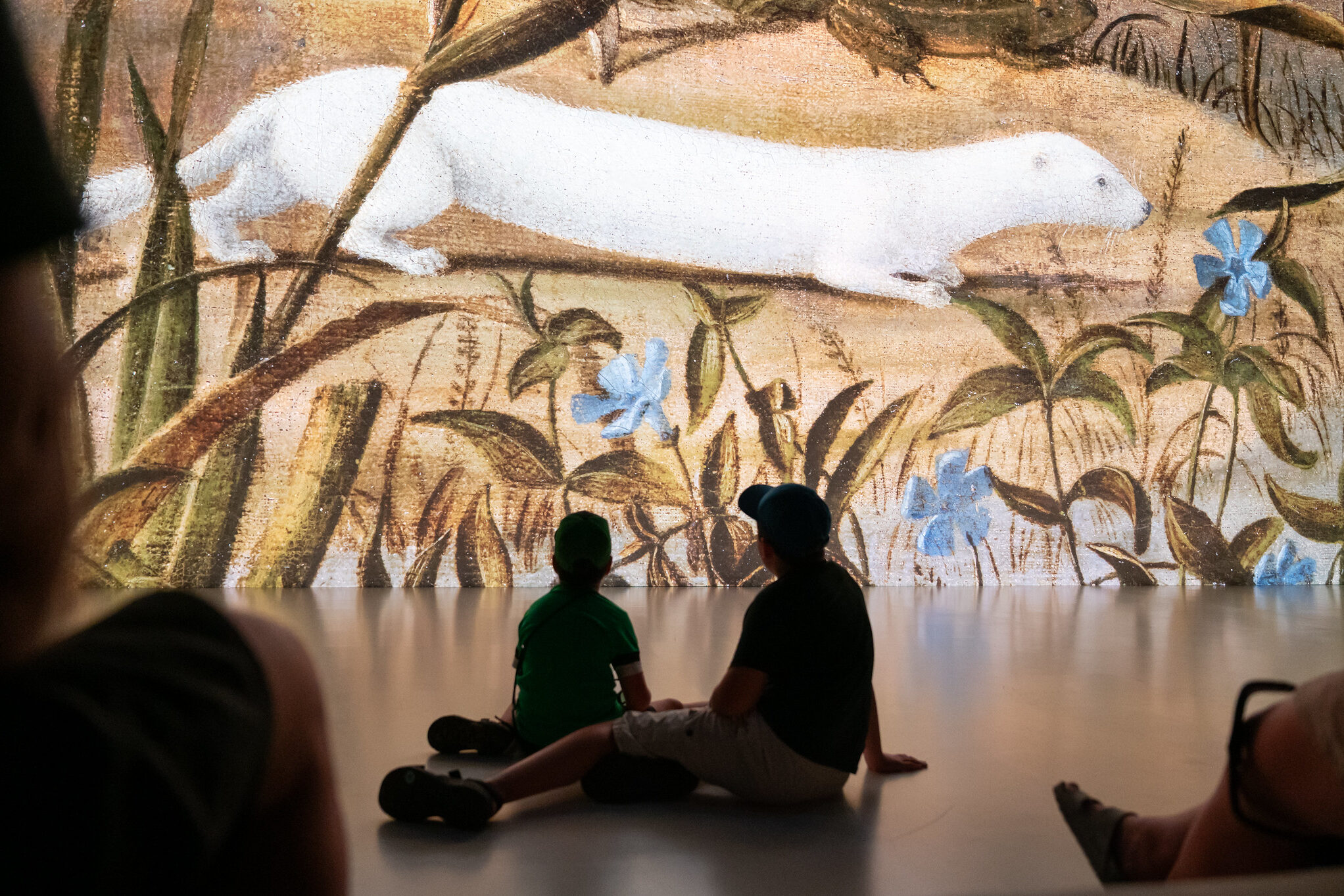
In cooperation with the Spanish Embassy in Vienna and the Museo Nacional Thyssen-Bornemisza in Madrid, the focus was on the early Renaissance. Impressive gigapixel images of Vittore Carpaccio’s masterpiece “Young Knight in a Landscape” were presented.
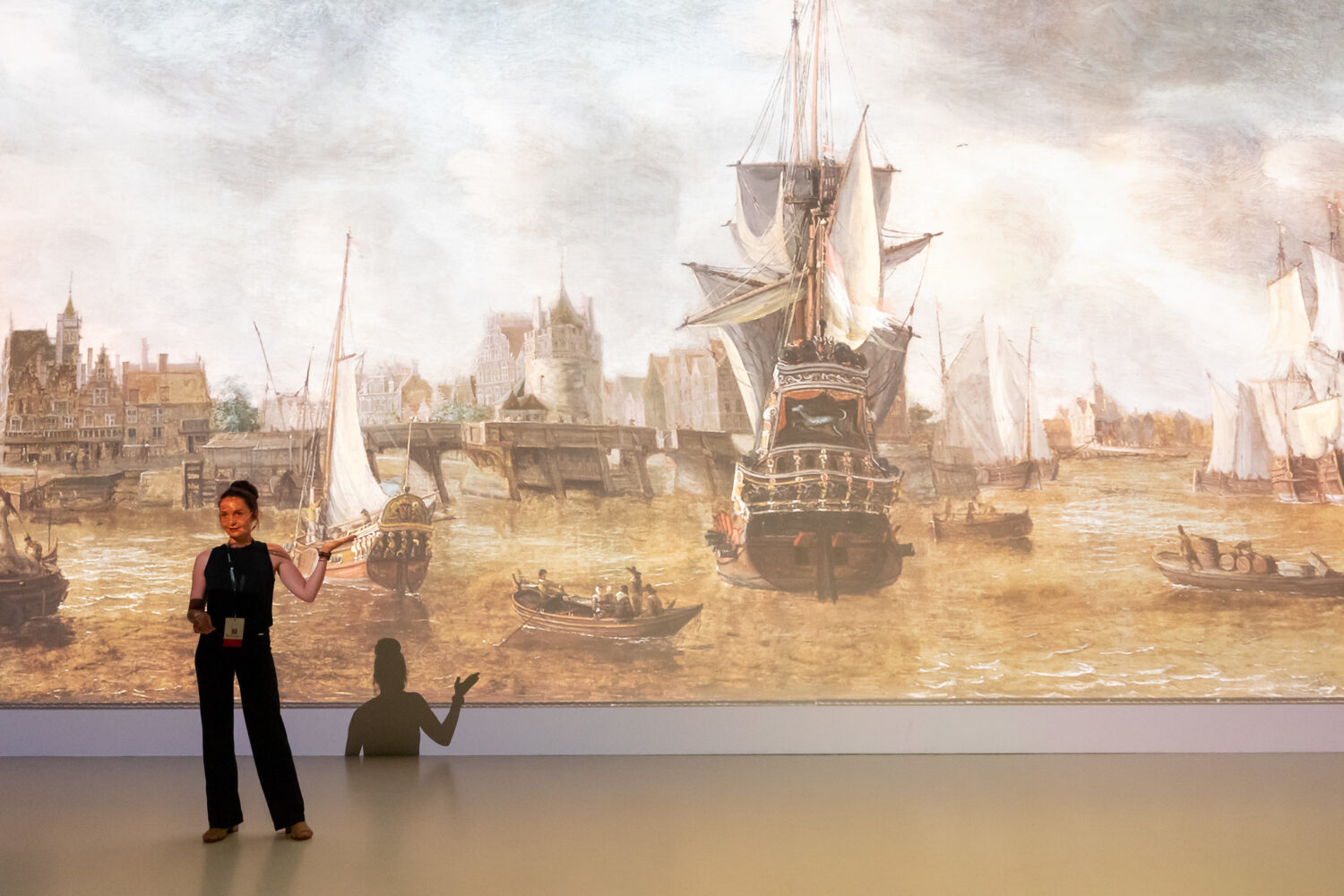
Another highlight of the Cultural Heritage Program was created in collaboration with the Kaiserschild Foundation, the Alte Galerie in Schloss Eggenberg in Graz and other renowned museums. Works by the Dutch still life master Pieter Claesz were shown. This contribution to Ars Electronica 2024 was part of the “Kaiserschild Art Defined” project, which aims to make artworks from its own and external collections accessible to a broad audience in an innovative way.
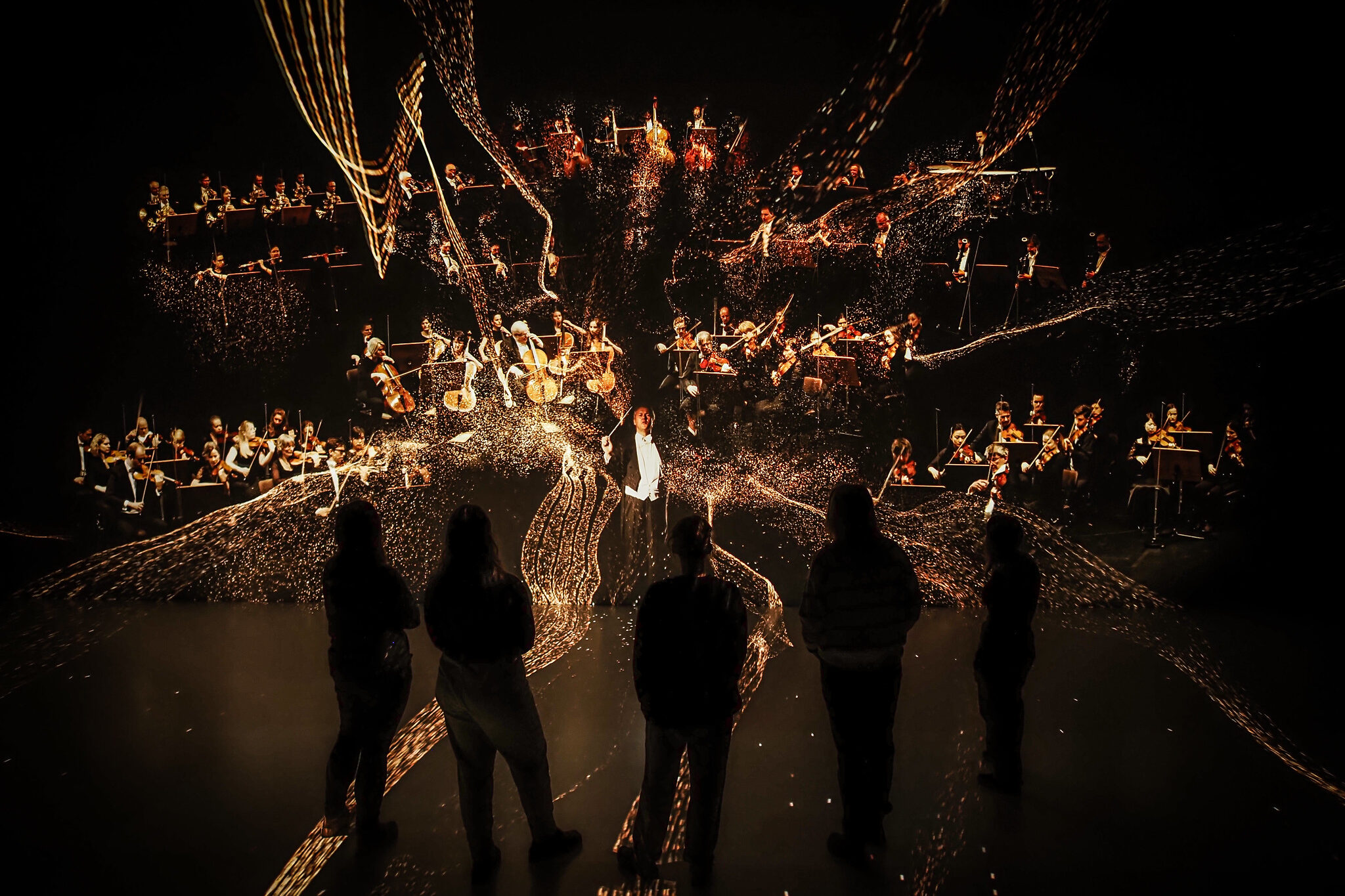
On September 4, 2024, Anton Bruckner, Upper Austria’s most famous composer, would have turned 200 years old. His work continues to shape the music and cityscape of Linz to this day. This anniversary was celebrated throughout Upper Austria with concerts, exhibitions and participatory projects. Ars Electronica also drew on its special connection to Bruckner. As early as 1979, the year the festival was founded, his 8th symphony was brought to the Donaupark for the first Klangwolke as a “symphonic open-air” and broadcast throughout Linz on radio sets. In 2024, Ars Electronica continued this experiment. Together with the Bruckner Orchestra Linz, the Ars Electronica Futurelab created two new experiences at the Ars Electronica Center that made Bruckner’s music accessible in innovative ways. In “Being Anton,” visitors were immersed in a unique soundscape that brought Bruckner’s world of thought and his time to life.
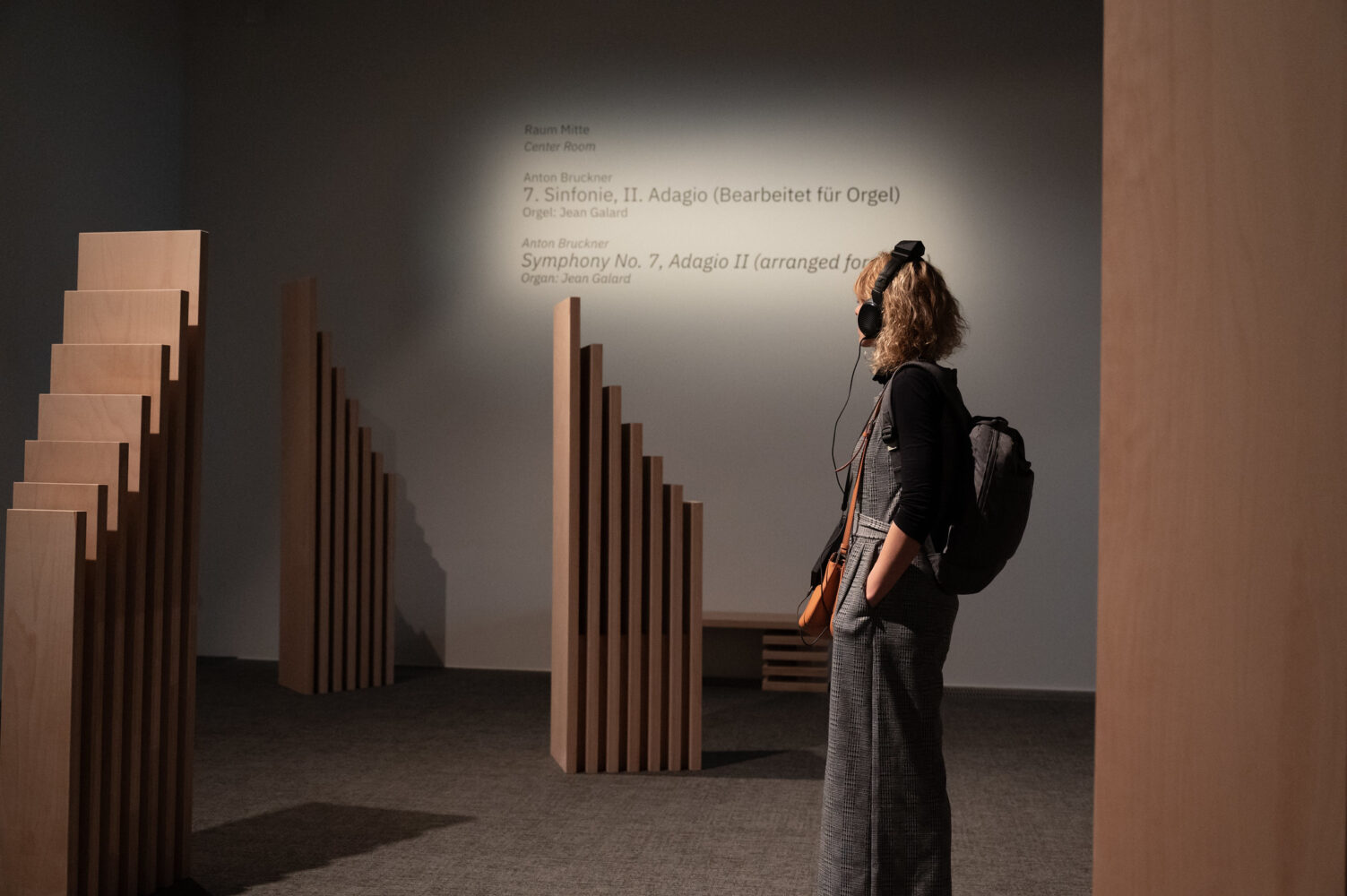
With “Playing Anton”, visitors were able to actively rearrange the music of the Bruckner Orchestra Linz and experience musical elements in an impressive 3D visualization.
Despite the challenges that have shaped the year 2024, art has once again proven to be a driving force that plays a decisive role in shaping society and culture. It inspires, makes people think and opens up new perspectives that go far beyond aesthetic forms of expression. Initiatives such as STARTS, State of the ART(ist) and the Ars Electronica Festival focus on projects that use creative approaches to draw attention to social, technological and ecological issues.
Through its ability to spark debate and foster interdisciplinary collaboration, art contributes to the development of a sustainable and just future. It shows how technological advances can interact with cultural diversity to jointly address global challenges. In doing so, it becomes a driver of ideas and visions that encourage people to actively participate in a better world.
If you want to join us again next year on our exciting journey and be part of the Ars Electronica platform, you are cordially invited to follow us on our social media channels such as Facebook, Instagram, LinkedIn, and YouTube, subscribe to our newsletter, or visit us at the Ars Electronica Center.
